At long last, I’m finishing up my journal of our spectacular (and I don’t use that word lightly) September trip to the American West. As you might recall, in my first blog we visited Grand Teton National Park, then I wrote about our magical journey through Yellowstone National Park with its otherworldly geysers and fumaroles.
As we exit Yellowstone’s East Gate through Sylvan Pass in the Absaroka mountain range, we soon find ourselves following the Shoshone River through the Shoshone National Forest, both named for the indigenous Shoshone people who inhabited the region. At the river’s edge are willows and September-blooming rigid goldenrod (Oligoneuron rigida). This area between Yellowstone and Cody (our destination for the day and overnight) is called the Wapiti Valley, wapiti being the Shawnee word for elk.
Our first stop out of Yellowstone (which has no private commercial businesses) is Pahaska Tepee, a mountain resort built in 1904 by Buffalo Bill Cody as a hunting lodge. The resort has the obligatory gift shop…
….. horses ready to be saddled for trail-riding through the forest……
…. and, most interesting to us, a little museum…..
…displaying artifacts of Buffalo Bill’s time there….
…. including something that’s still important for forest-firefighters in the Yellowstone ecosystem, the vintage version of a modern Fedco smokechaser, a backpack water pump.
Driving along the Shoshone River, I’m reminded of an historic story of mistaken identity. When John Colter (mentioned in blog on the Tetons) became the first white man to reach Yellowstone in 1807-08, he described a sulphurous-smelling river with frightening geothermal features, a place that skeptics nicknamed Colter’s Hell. The assumption was that this river was in geothermal-rich Yellowstone, but it was later deduced that the river Colter described was, in fact, the Shoshone as it traverses deep canyons near Cody, Wyoming. For the record, this part of the Shoshone just smelled to me like a lovely autumn day!
The rock formations – pinnacles or hoodoos – in the Wapiti Valley are spectacular and renowned, the product of erosion of lower rock layers contrasted with the relative stability of towers remaining when hard cap rocks protect softer sediment below. This one looks for all the world like a Shoshone chief.
The brownish rock of the cliff across the highway is volcanic breccia.
Six miles west of Cody, Wyoming, we pass by the Buffalo Bill Reservoir. You can see how the landscape here has changed from rugged mountain valley to rolling hills and sagebrush. Cody actually sits at the edge of the Bighorn basin in the centre of four mountain ranges: the Absarokas, Big Horn, Owl Creek and Bridger Mountains.
Soon we pull up to the main attraction in Cody: the Buffalo Bill Center of the West. The name is a little deceiving, because this is five museums in one: Buffalo Bill Museum, Plains Indians Museum, Whitney Western Art Museum, Draper Natural History Museum, and the Cody Firearms Museum.
Pretty much everything in the town of Cody – and certainly in the Buffalo Bill Museum in the eponymous Center of the West – focuses on the legacy and legend of William Frederick Cody (1846-1917), aka Buffalo Bill Cody. (As a Torontonian I was interested to learn while researching this that when Iowa-born Cody was a youngster, he lived for 7 years in what is now Mississauga, Ontario, the birthplace of his father, Isaac, and was christened in the small chapel that the Cody family built in 1839. The Dixie Union Chapel still stands at the corner of Cawthra and Dundas.) After moving his family to the Kansas territory in 1853, Isaac Cody was stabbed by a pro-slavery sympathizer at a political meeting. He died three years later and William, aged 11, began working to support his sisters and mother. He drove horses and wagons (but the vaunted Pony Express stories seem to have been exaggerated by him to enhance his showman’s reputation later). When the Civil War broke out in 1861 young William was attracted to the Kansas Redlegs, an anti-slavery militia, joining it in 1862 to avenge his father’s death. He later joined the regular Union Army and served until the war’s end in 1865, fighting in 16 battles. Married and back home in Kansas, he joined a company providing meals to the workers building the Kansas Pacific Railroad. With his natural riding ability and his army-acquired skill as a crack shot, Cody’s job was to provide the meat, i.e. buffalo steak. He went back to work for the Army in 1868, acting as a civilian scout in the Indian Wars. His skill at hunting bison for the railroad and also the army became legendary, earning him his nickname “Buffalo Bill”. It’s estimated he killed 4282 bison in the years 1867-68. He burnished his reputation through his friendship with another “Bill” folk hero of the old West, Wild Bill Hickok.
By the early 70s when he was in his late 20s, Cody had already begun making appearances in newspapers and adventure novels, and he, Hickok and two friends started producing and starring in their own stage plays, the Wild West Shows. But he was still riding as a scout for the Fifth Cavalry in the Great Sioux War, and in July 1876 in northwestern Nebraska, he shot a young Cheyenne warrior named Yellow Hair and brandished his headdress and part of his scalp as a grisly atonement for Custer’s defeat and death at Little Bighorn just weeks earlier. It is memorialized in this 1928 painting ‘First Scalp for Custer’ by Cody’s friend Robert Lindneux.
In 1883, he mounted the first circus-like production, Buffalo Bill’s Wild West, in La Platte, Nebraska.
Ironically, in June, 1885, he even signed up Sitting Bull for an initial bonus of $125 and a wage of $50 per week. Despite Cody’s post-Indian Wars attempt to integrate his attraction using the very chief whose leadership helped make it possible to defeat General Custer in the Battle of Little Bighorn, Sitting Bull himself was killed 5 years later during his arrest by Indian Agency police.
Another feature of the museum is the Deadwood stagecoach, which had a stormy history in its career of 11 years, being repeatedly attacked for the gold and currency it carried.
One of the coaches was incorporated into Buffalo Bill’s Wild West tour, and when the show visited England for Queen Victoria’s Jubilee in 1887. “The highlight of the show came when several monarchs, including the Prince of Wales and the kings of Denmark, Greece, Belgium, and Saxony, hopped aboard the Deadwood Stage with Buffalo Bill in the driver’s seat and rode around the arena while the assembled Indians engaged in a mock attack.” (Buffalo Bill in Bologna, 1869-1922, Robert W. Rydell and Rob Kroes)
In 1893, he changed the name to Buffalo Bill’s Wild West and Congress of Rough Riders of the World, featuring a parade, cowboys, Indians, Turks, gauchos, African-Americans and others. He also launched the career of sharpshooter Annie Oakley (below) and her husband Frank Butler.
Despite his early skill at buffalo-hunting, according to displays at the museum, “Cody became an outspoken critic of the wanton slaughter of buffalos that began in the 1860s and led to their near extermination within two decades.” This is a taxidermy tableau in the Buffalo Bill museum.
Moving out of the Buffalo Bill Museum, I visit the wonderful Plains Indian Museum.
Of the myriad exhibits, I love the clothing. On the left is a deer hide-beadwork Cheyenne baby cradle. On the right is a girl’s dress adorned with elk teeth.
This tells the story of the relative ease with which the Cheyenne could migrate, once they had horses.
This hide painting by the Arapaho artist Eagle Robe, Eugene Ridgeley Sr., depicts the Sand Creek Massacre of 1864, in which 200 Cheyenne and Arapaho people, mostly women and children, were killed by the 3rd Colorado Cavalry.
The Draper Natural History Museum features exhibits on geology and biology, including Wyoming’s native animals.
You can watch scientists working on specimens in the Draper Museum Living Laboratory Exhibit.
Isn’t this spectacular? A map made from 27,000 mosaic tiles!
And this stunning painting by James Everett Stuart of the Yellowstone Falls and Canyon, part of the Center’s collection, takes me back to our recent visit to this spectacular feature.
Our final stop at the Buffalo Bill Center of the West is Dan Miller’s Cowboy Music Revue, starring Dan, his daughter Hannah Miller, and Wendy Corr. Here’s a little flavour of their music:
The next morning, after an overnight in Cody, we head out onto the highway. Bus travel at 60 miles an hour makes photography difficult, but the four small scenes below give you an idea of what we pass by. The crop at top right is sugar beets. The formation at lower left is a mesa, a rise weathered away by millions of years of erosion. At bottom right is a farm field after harvesting. In Wyoming, 80% of water use is farming and agriculture.
Somewhat bizarrely, there’s a Museum of Flight and Aerial Firefighting in the middle of the high plains – and it’s our rest stop.
Wyoming is known for its bentonite clay deposits. This is the stucco facility of Wyo-Ben Inc. at Greybull. You can see the red bentonite on the slope beyond.
Below is a field of dented corn, used mostly for animal feed (it’s also good for grits). At far right, you can see the bright green of an alfalfa field.
Here are some more snapshots of agricultural scenes (I love the beehives, top left) and geological features in the distance, the beginning of the Bighorns Bottom left is sandstone; bottom right is limestone (I think).
Highway 14 takes us east over the Bighorn Mountains, the last of the Rocky Mountain ranges. We’ll be at 9,000 feet elevation at the top.
The scenery is spectacular; we stop and look across the range. The small tree/shrub at the left is Utah juniper (Juniperus osteosperma). We’re at about 6000 feet here. I believe the pinkish rock on the top of the slope in the distance is Madison group limestone. (But I could be wrong). Geologists refer to that sloping inclination as a monocline.
Here’s a closer look at the top. All those blackish dots below are Utah juniper.
Look how the rock is weathered away at the very top.
At our lookout, I spot a painted lady butterfly (Vanessa cardui) nectaring on rabbitbush (Chrysothamnus).
As we descend to the eastern side, we pass big grazing ranges. The Bighorns have skiing, snowmobiling, sheep and cattle grazing, and forestry – apart from their natural beauty. .
Looking east as we descend, we see the Tongue River Valley; hidden is the Tongue River, which has its source in the Bighorns and flows north to Montana. There is a long history of litigation between the two states, with Montana claiming that Wyoming farmers take too much of the Tongue’s water. The trees on the slope are Ponderosa pines (Pinus ponderosa).
We pass the Tongue River Elementary School in Dayton, Wyoming….
…and it sparks a memory of a song by one of my favourite singers, Nanci Griffith (written by her former husband Eric Taylor). It captures a little of the 19th century lore of this area (a little east into South Dakota), the story of Crazy Horse (whose memorial we’ll see tomorrow) and “young Mickey Free, who lost an eye to a buck deer in the Tongue River Valley”. (And no, that’s not a photo of Crazy Horse, whose likeness has never been seen in a photograph). Listen to the words.
Our first look at open coal cars comes near Dayton. Forty percent of America’s coal is mined in this area. In fact, the largest coal mine in the world is the North Antelope Rochelle Mine near Gillette, WY.
And then we arrive at the highlight of our time in Wyoming’s Cowboy country: the TA Ranch in Buffalo WY.
The ranch has a storied history in Wyoming cattle country lore, for it was the site of the bloody grand finale of the Johnson County cattle wars, between the corporate cattlemen and homesteading ranchers. (See my video below for more on that episode).
After lunch, we have a number of choices of activities, from taking a wagon ride…..
….. to taking a trail ride. I haven’t been on a horse since I was 10 or so, and the thought frightens me a little, but they look docile and the land is flat (and my husband is willing, and anything he can do….). Thanks to Robert Kelley for the photo.
I make a video from the back of my horse Commander, so I can remember the landscape and the experience better. Here it is!
We also have time to watch TA Ranch’s ‘horse whisperer’ Marchel Kelley work on training a frisky horse. Here’s my video of that experience.
We finish our day at the lovely Ranch at Ucross …..
….where we have dinner, then sit around the campfire, listening to Katie Wilhelm sing cowboy songs for us before bedtime. Here’s a Wyoming classic:
As I walked out one morning for pleasure,
I spied a cow-puncher all riding alone;
His hat was throwed back and his spurs was a jingling,
As he approached he was singin’ this song,
Whoopee ti yi yo, git along little dogies,
It’s your misfortune, and none of my own.
Whoopee ti yi yo, git along little dogies,
For you know Wyoming will be your new home.
And a little video of Katie singing:
The next morning we awake to the last full day of our tour. It seems incredible that we have covered so much spectacularly beautiful natural territory in just 5 days, but we’re now leaving Wyoming and heading to the Black Hills of South Dakota to view the work of two men who decide to apply their talents to shaping nature (literally) in order to honour others. But first, a little scenery as we go: cattle near Ranchester, Wyoming….
… a coal mine near Casper….
….and one of many oil rigs in the area.
It takes us less than four hours to reach our first destination, the Crazy Horse Memorial. Details and background can be found on the website, but in essence, the sculpture is the work of the late sculptor Korczak Ziolkowski (1908-1982) and now his ten adult children, who continue to carve the 600-foot (183 metre) high granite mountain on land that belonged to the Lakota Sioux, fulfilling the pact between the Ziolkowski and the late Oglala Lakota Chief Henry Standing Bear (1874-1953), who wrote to him in the late 1930s saying: “My fellow chiefs and I would like the white man to know the red man has great heroes, too”. This was in response to the carving nearby of Mount Rushmore (1927-1941), memorializing Presidents Washington, Jefferson, Roosevelt and Lincoln. Korczak Ziolkowski had been working – but not happily – as assistant to the head sculptor Gutzon Borglum; their relationship ended with a fistfight. The Crazy Horse Memorial honours the iconic Lakota warrior who led 1500 warriors to defeat General Custer and the 7th Cavalry at the Battle of the Little Big Horn in 1876, and was killed the following year after surrendering. Little Big Horn was the worst defeat for the army in the Plains Indian War, and the greatest victory for the Indians. As Chief Standing Bear said of the carving: Crazy Horse was to be seated on his horse with his outstretched hand over the horse’s head indicating, “My lands are where my dead lie buried,” in response to a cavalry man asking him where his lands are now.
After serving with the Army during the WWII, Ziolkowski began carving in 1948, using a scale model he’d made of Crazy Horse – something that can only be called an artistic rendition, since the warrior never permitted his photo to be taken. This is a plaster rendering of the ultimate design.
The final face details were finished in the spring of 1998.
Almost 70 years after its beginning, trucks, cranes and earth movers replace the rudimentary equipment Ziolkowski used in the first few decades.
On a personal note, about a decade ago I worked intensely with the music of the late California singer-songwriter John Stewart (composer of ‘Daydream Believer’ and 400+ more songs), the goal being to create a theatrical adaptation. During that period, I happened upon John’s tribute to Korczak Ziolkowski, a song I incorporated into my YouTube video on the Crazy Horse Memorial. John’s lyrics attempt to answer the question many have in gazing on this monolithic piece of art: why would someone devote his life to such a goal? Have a listen.
Our final destination needs little commentary, for the carved faces at Mount Rushmore form a renowned national monument, one that’s made its way into countless films and books. But if you were sneaking up on it from behind, you’d never know what awaits on the other side.
Move a little further and you see the first president of the United States, George Washington, peeking out over the Ponderosa pines.
We arrive at the front of Mount Rushmore and park; then begin the walk to the base of the mountain.
There are boardwalks that traverse the base of Mount Rushmore, and as I look up, I see a family of mountain goats peering down at the tourists. It’s a little ironic that we find the wildlife here, near the snack bar, when we didn’t see mountain goats in Yellowstone…..
Given the angles and the height, it’s tricky to see all the presidents from the lower flank of the mountain. But I adore the fact that I can see the aspens and pines below their faces. The carving of the president’s faces was completed between 1934 and 1939. When Gutzon Boglum died in 1941, his son Lincoln took over working on the presidential torsos, but federal funding ended that autumn, and the carving ended with it, well above the presidential waists.
Look at Lincoln peering through Ponderosa pine. It’s perfect!
And George Washington gazing down past trembling aspens.
Focusing on Washington’s ‘eye’ with my telephoto lens, I’m fascinated that Gutzon Borglum and his son Lincoln were able to create this reflection in the ‘iris’.
President Roosevelt is always in shade, so this is the best I can do with the Rushmore presidents…..
Soon it’s time to head back to the bus and make our way to our hotel In Rapid City, South Dakota. I’m delighted that our room at The Rushmore Hotel seems to evoke a little of our environment over the past six days. I know it’s only wallpaper, but it feels good to be falling asleep in front of aspens.
I can’t say enough about Tauck Tours and our host Murray Rose. Writing this blog, I’ve just returned from a week in Aruba. It was a fine getaway from winter; the sea was turquoise, the sky periwinkle-blue, the people lovely….. but I didn’t gain much knowledge of our planet, even as I relaxed with my books. This trip to the Tetons, Yellowstone and Rushmore filled my head with knowledge. And isn’t that why we travel?

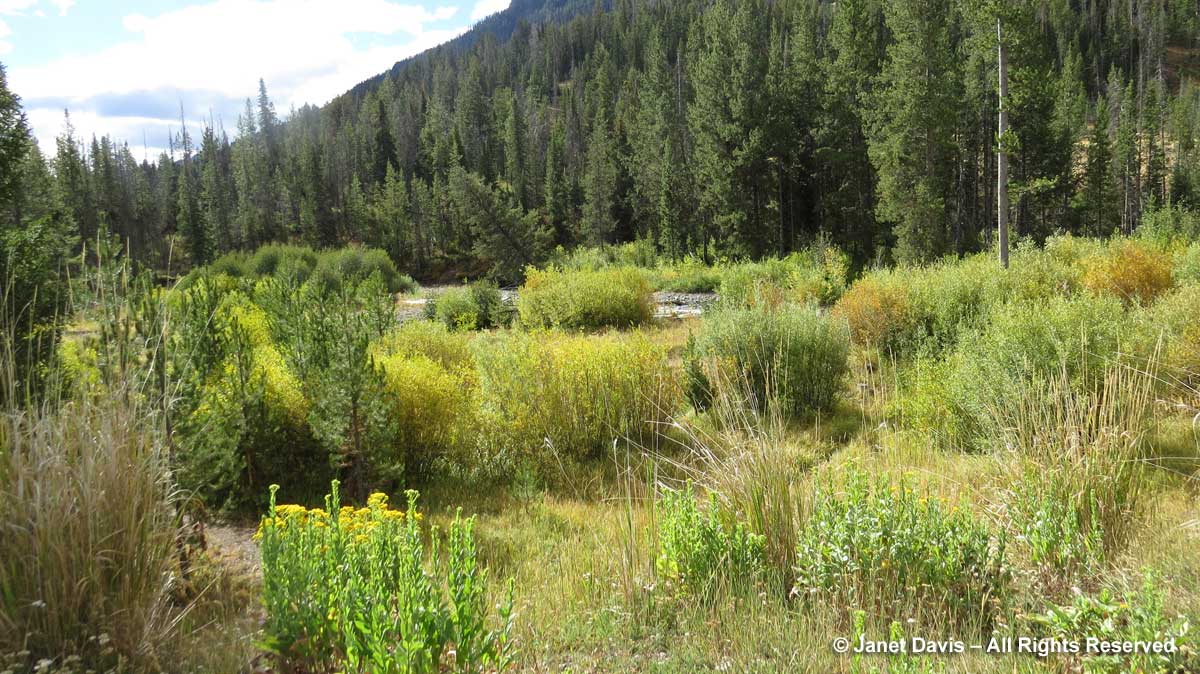
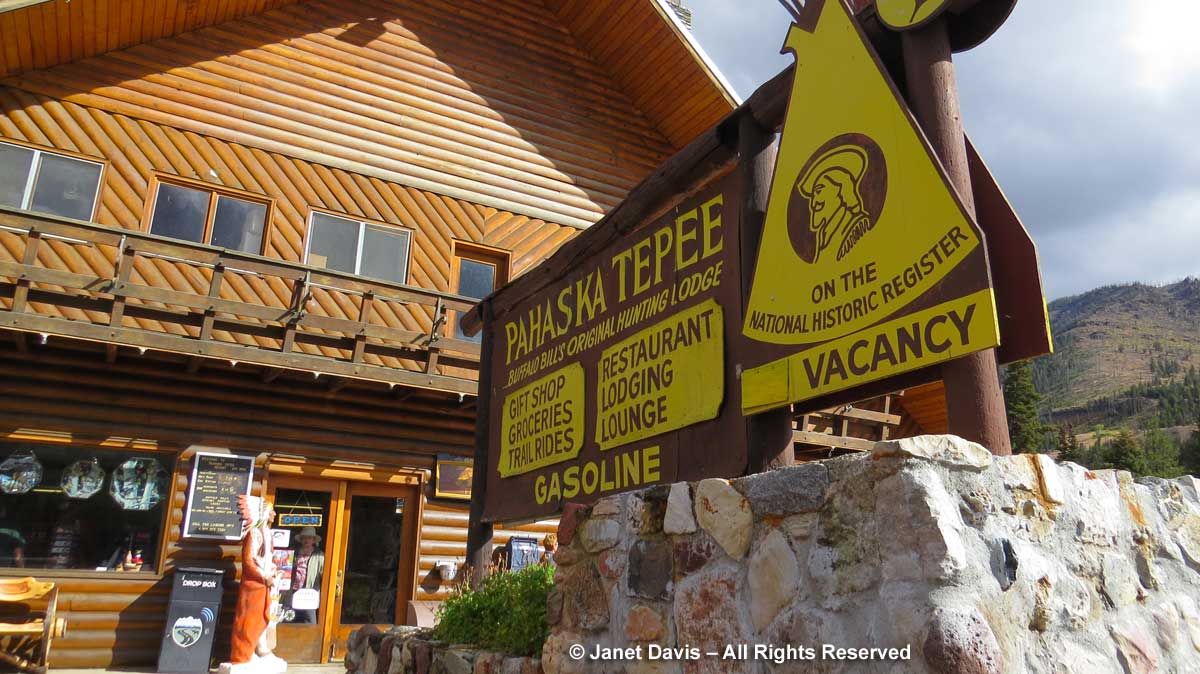
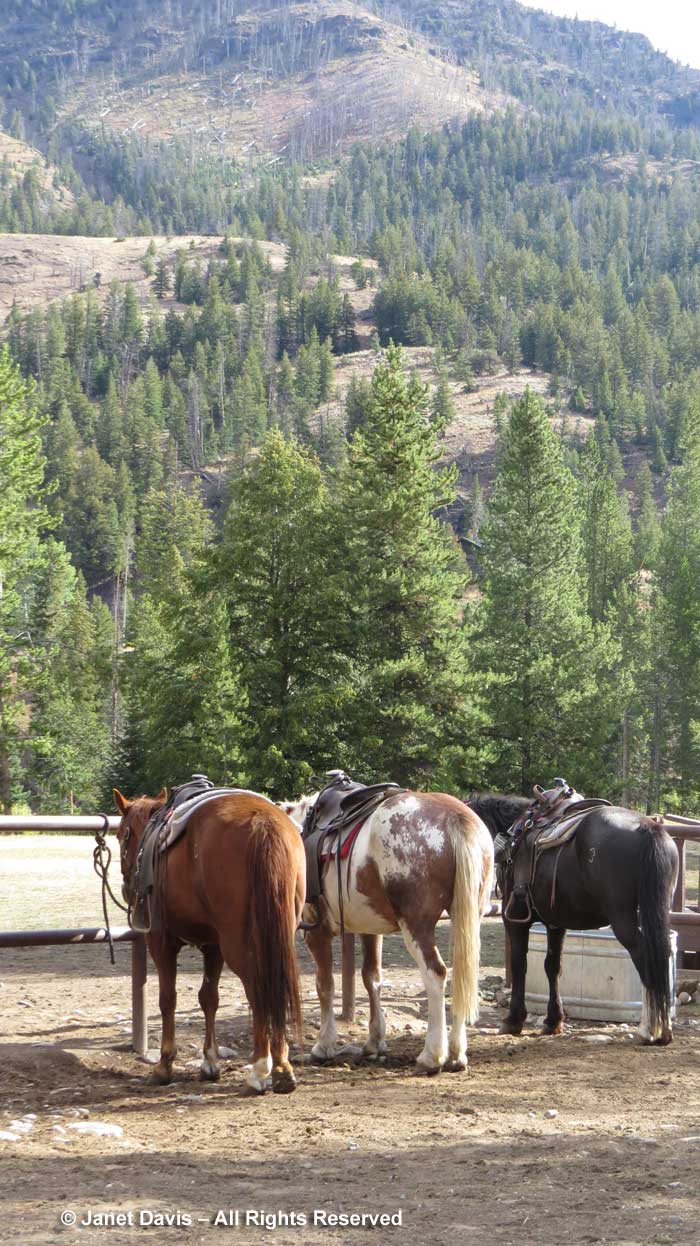
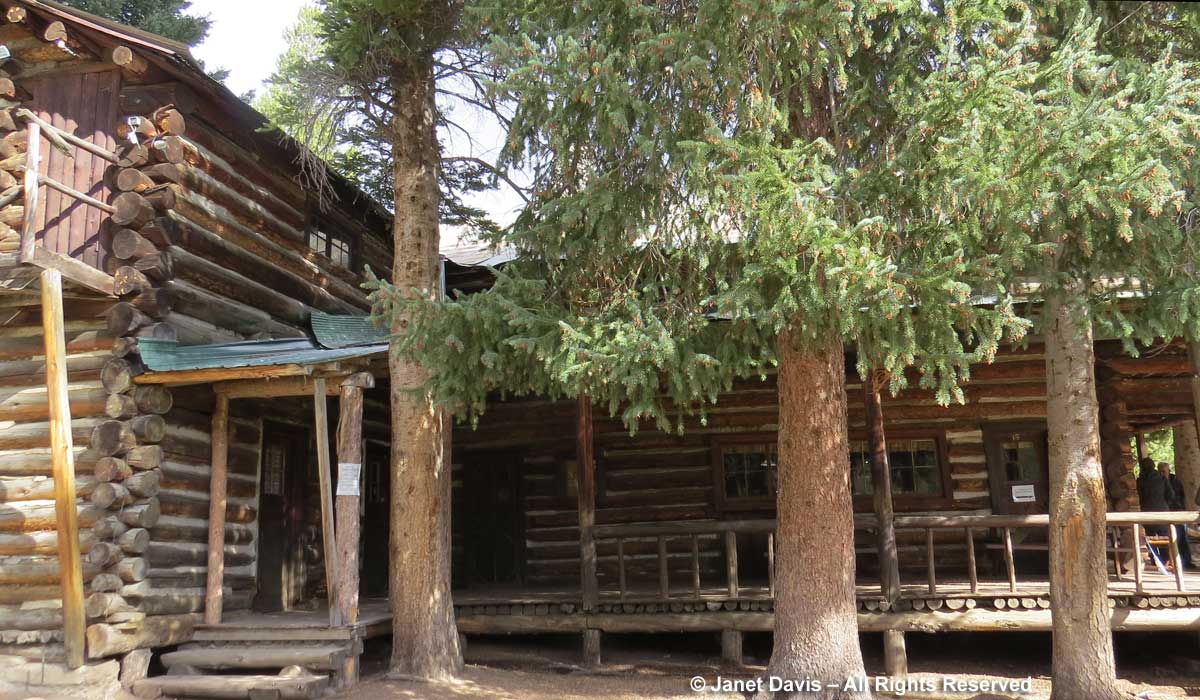
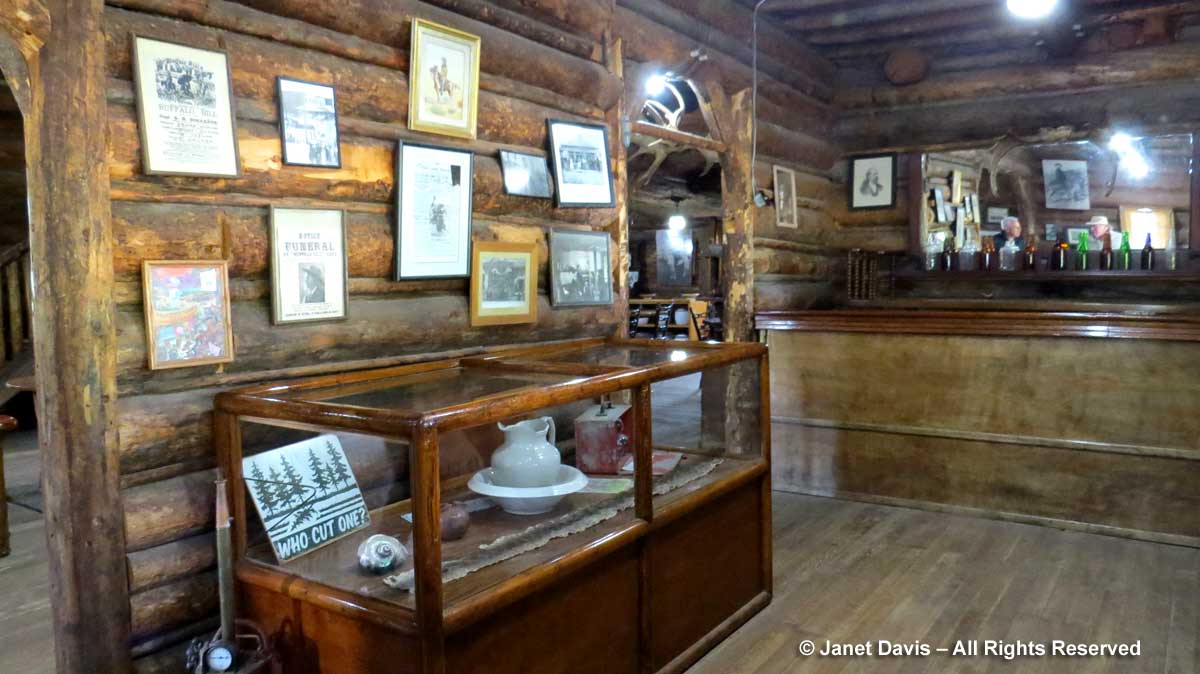
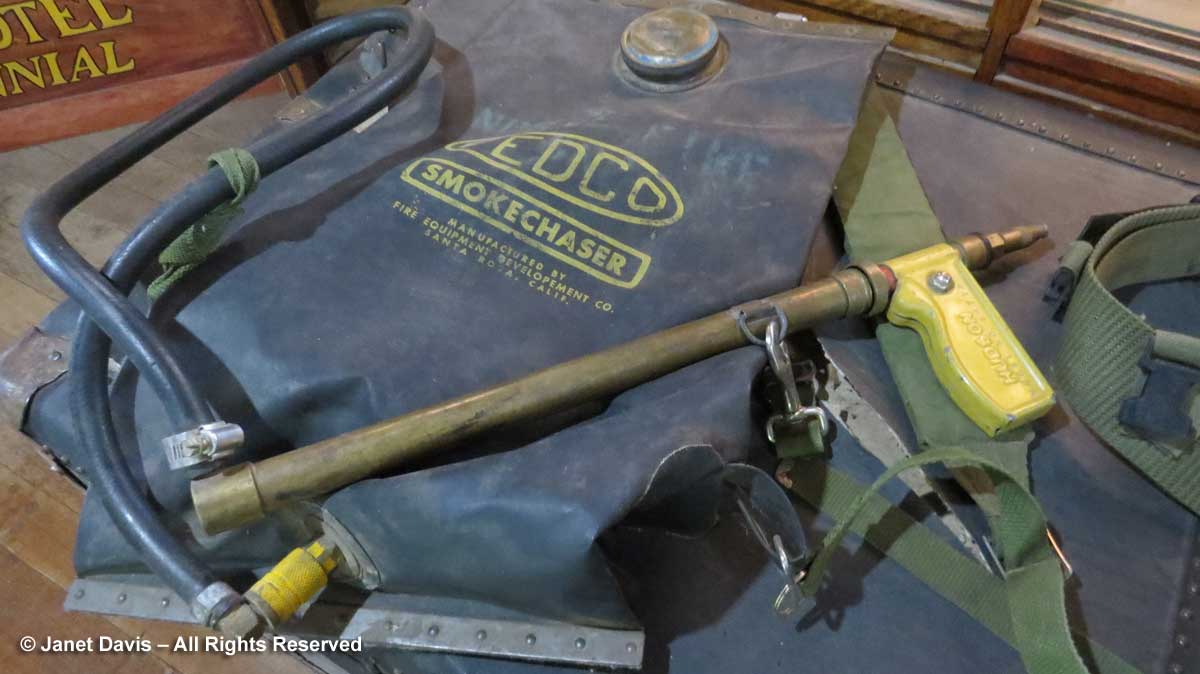
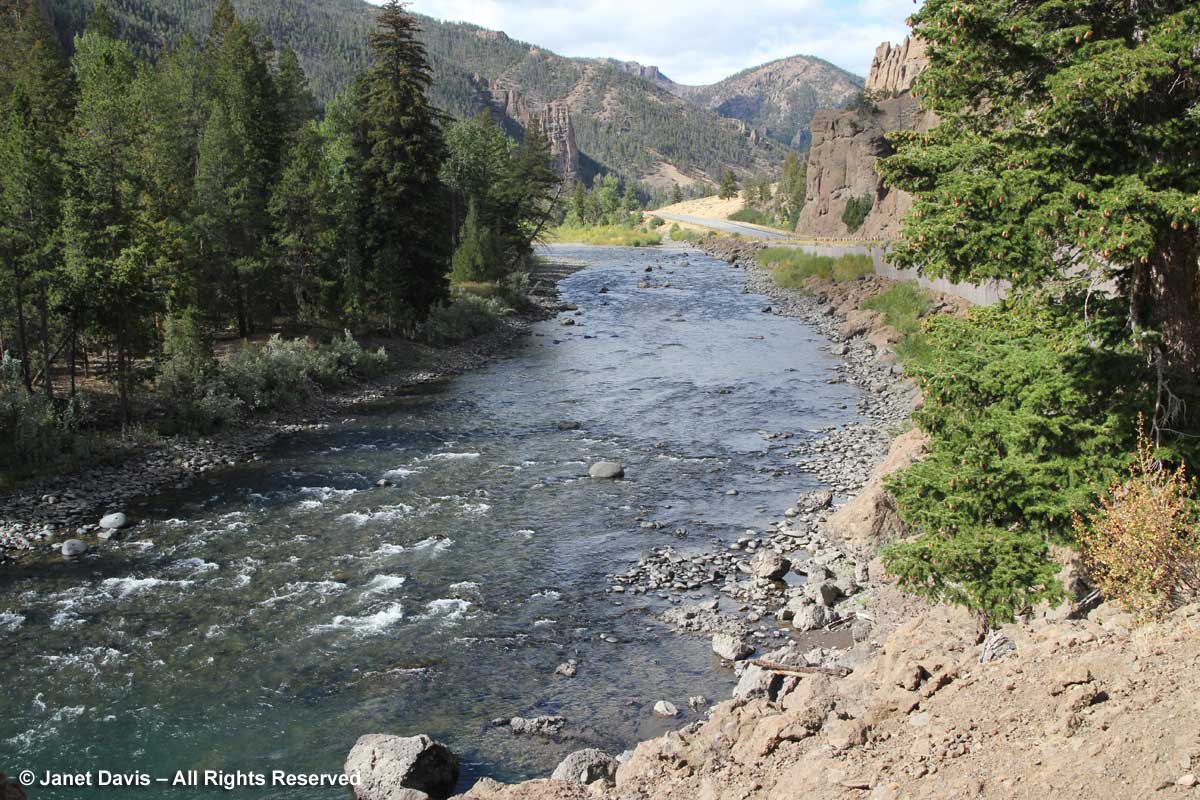
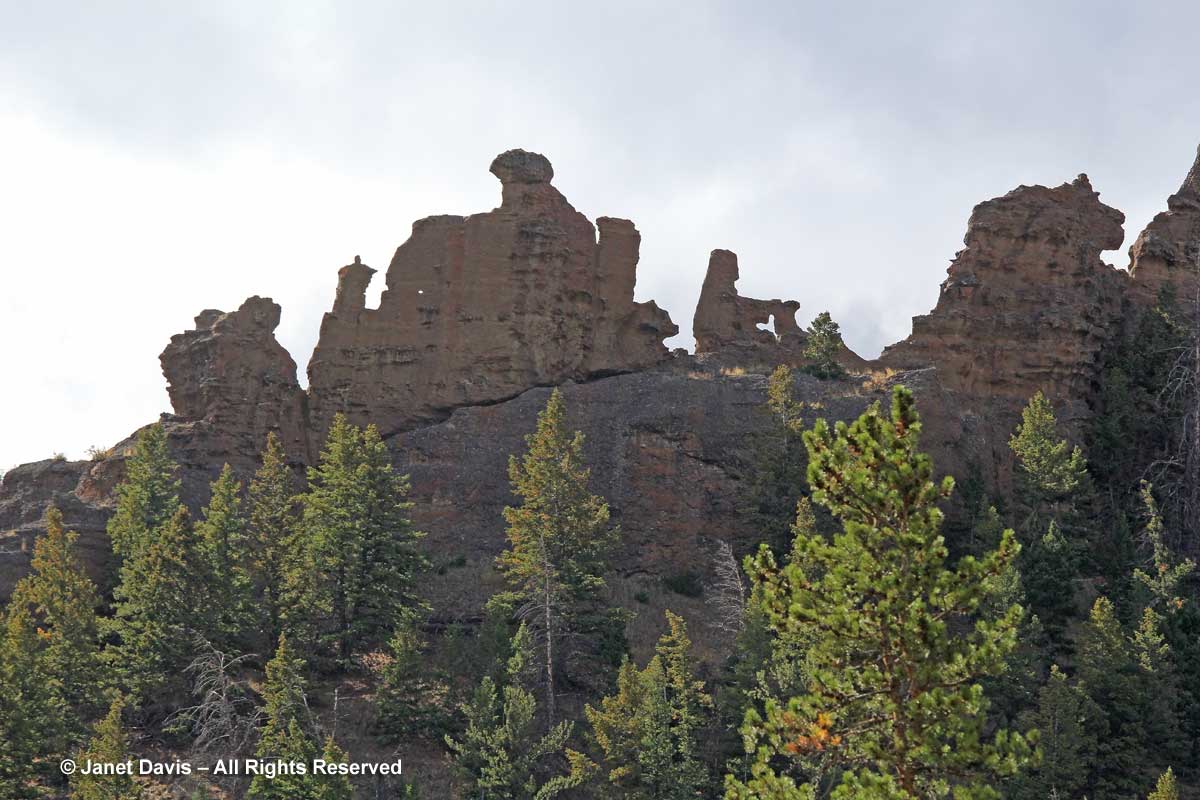
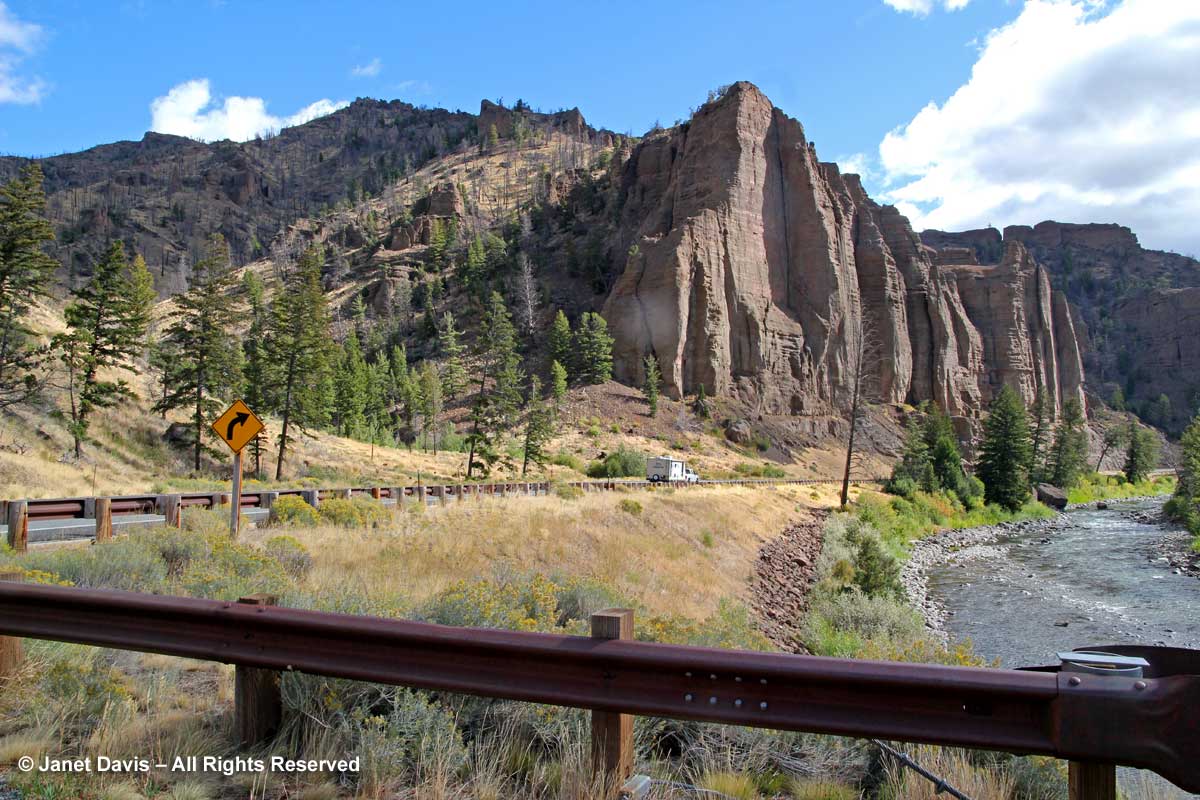
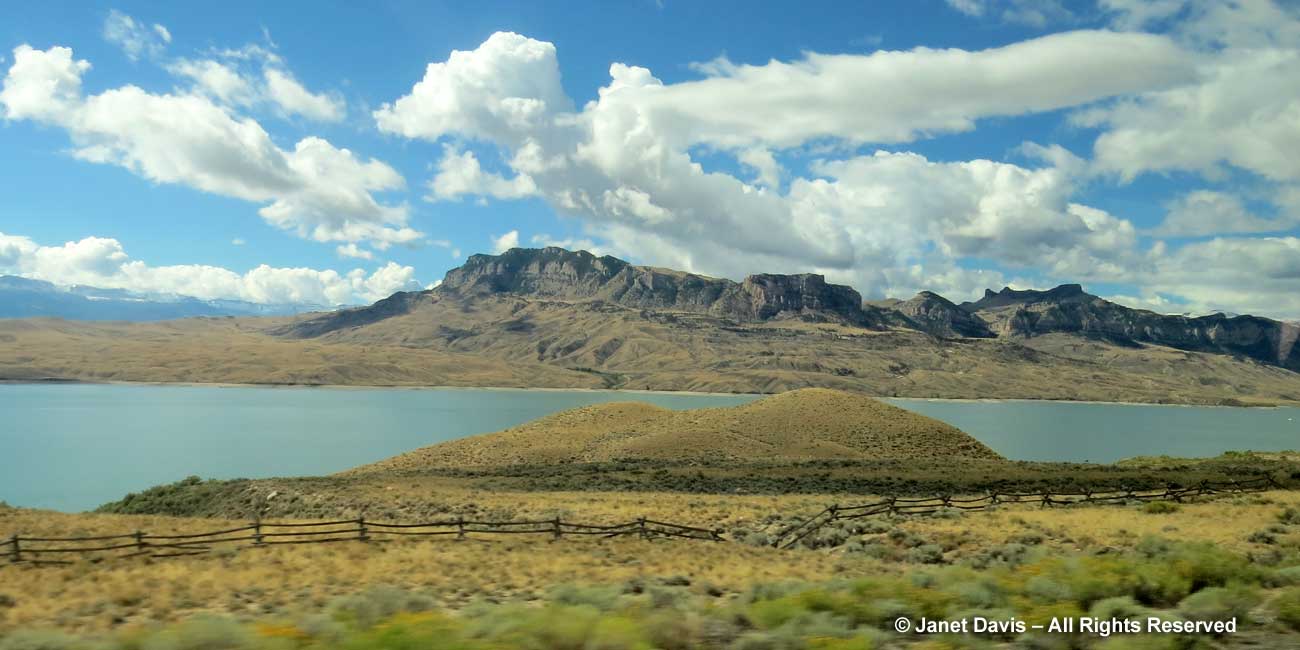
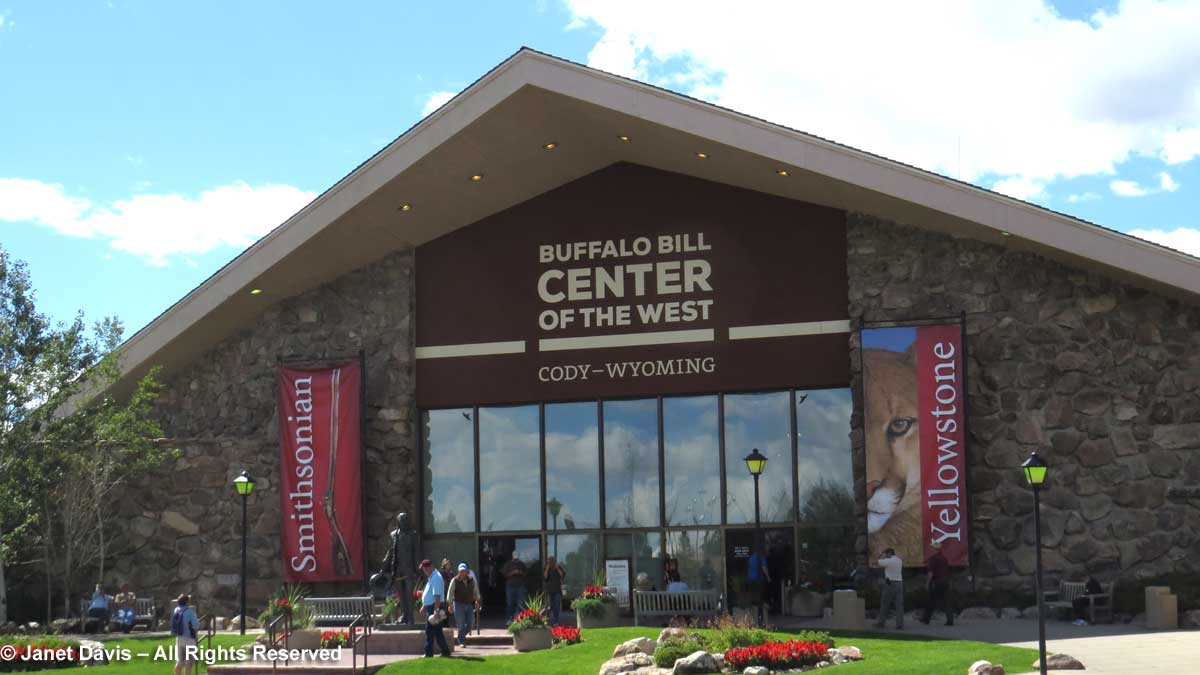
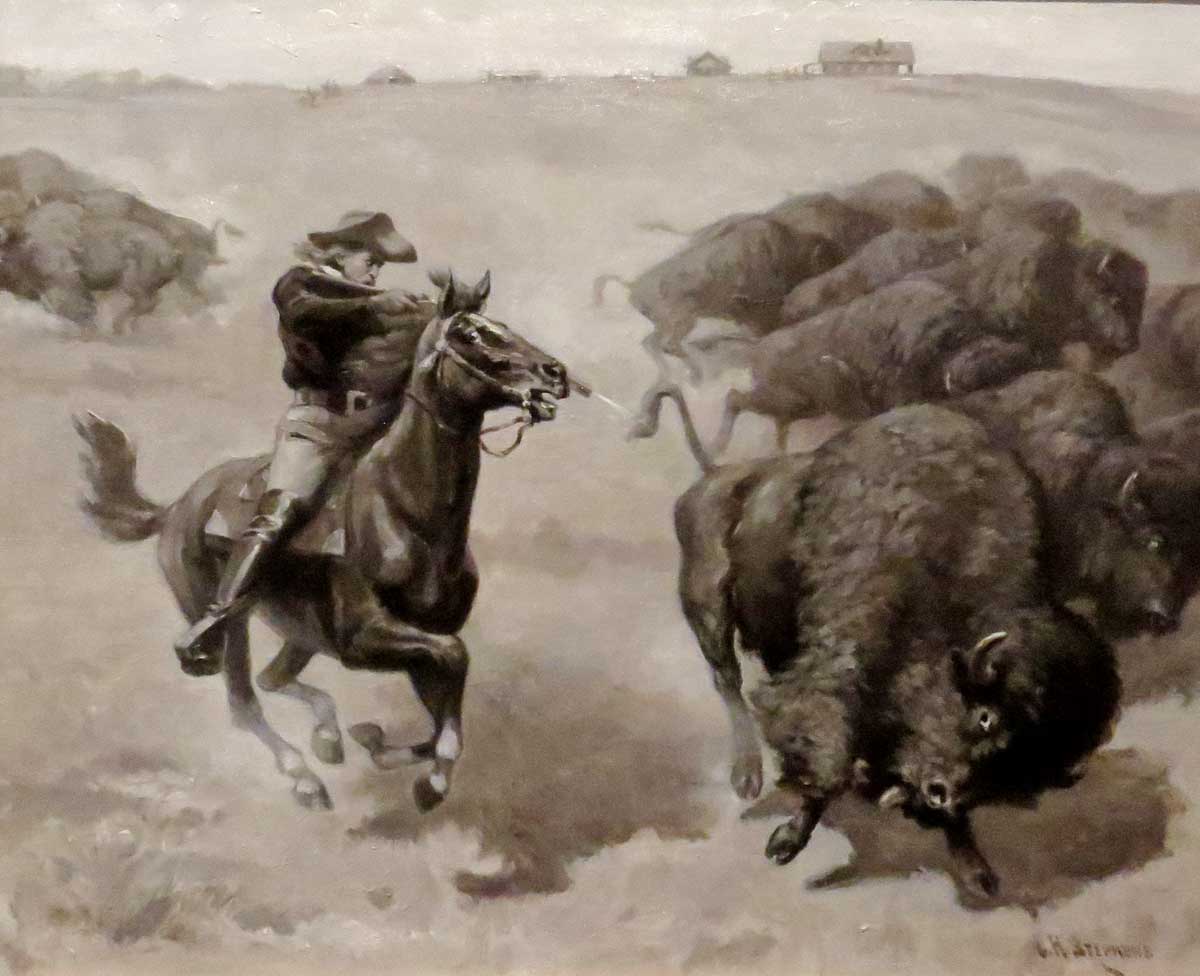
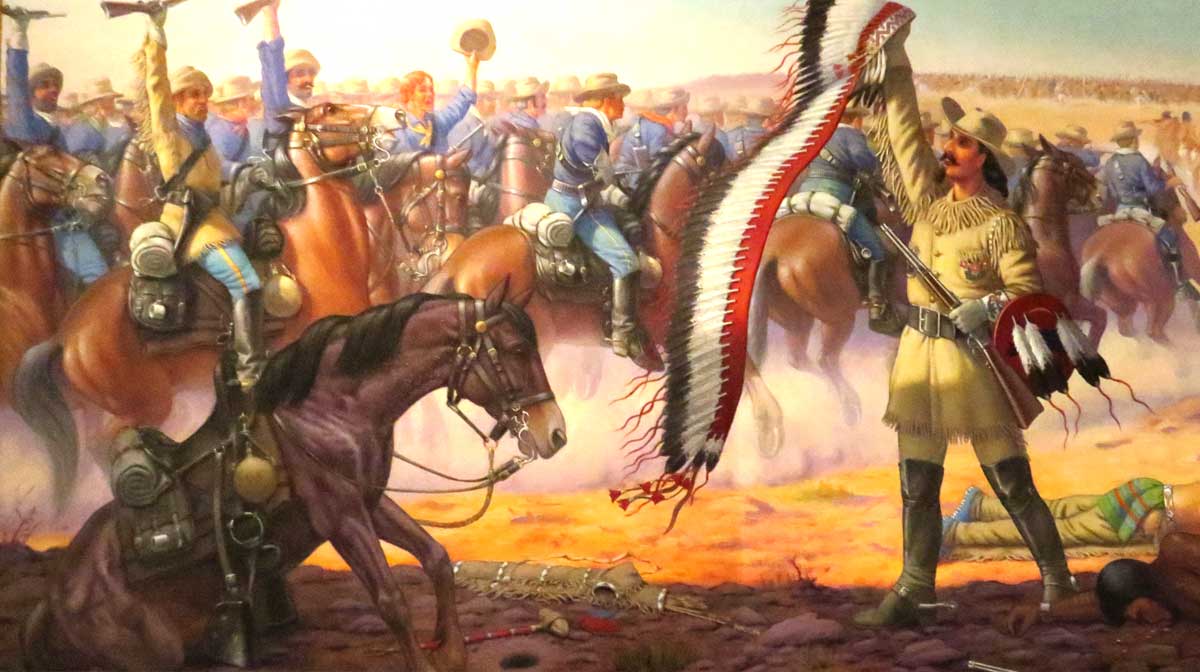
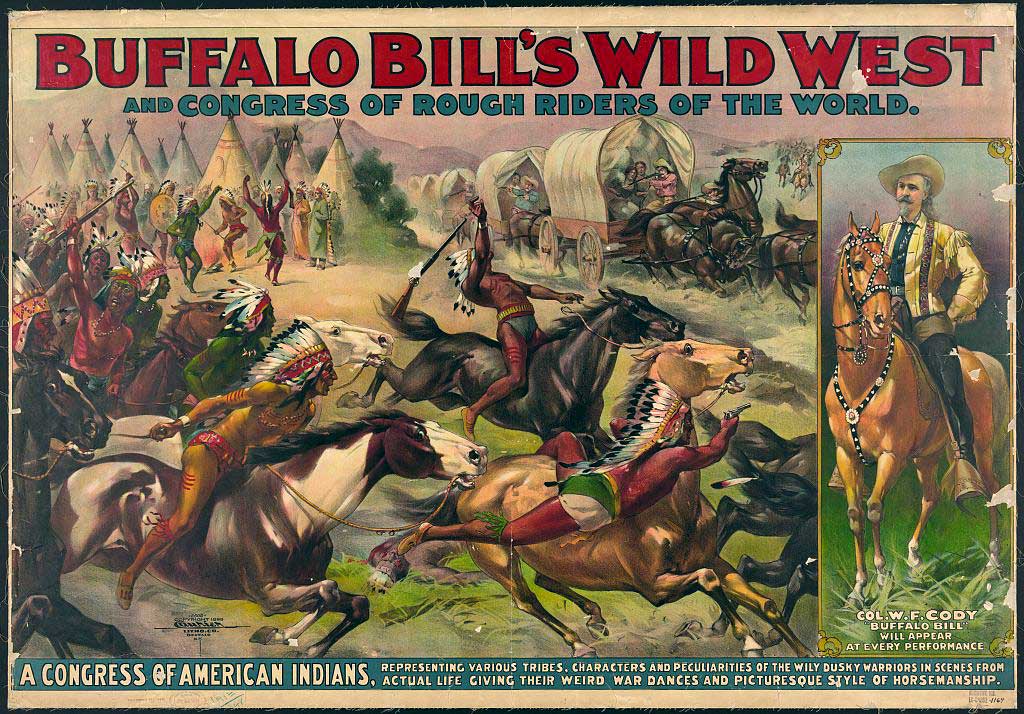
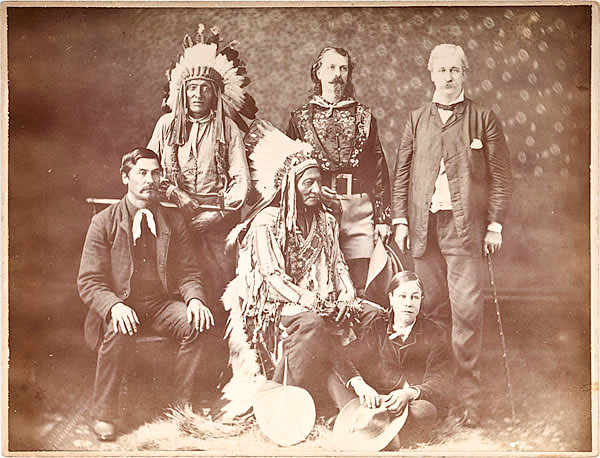
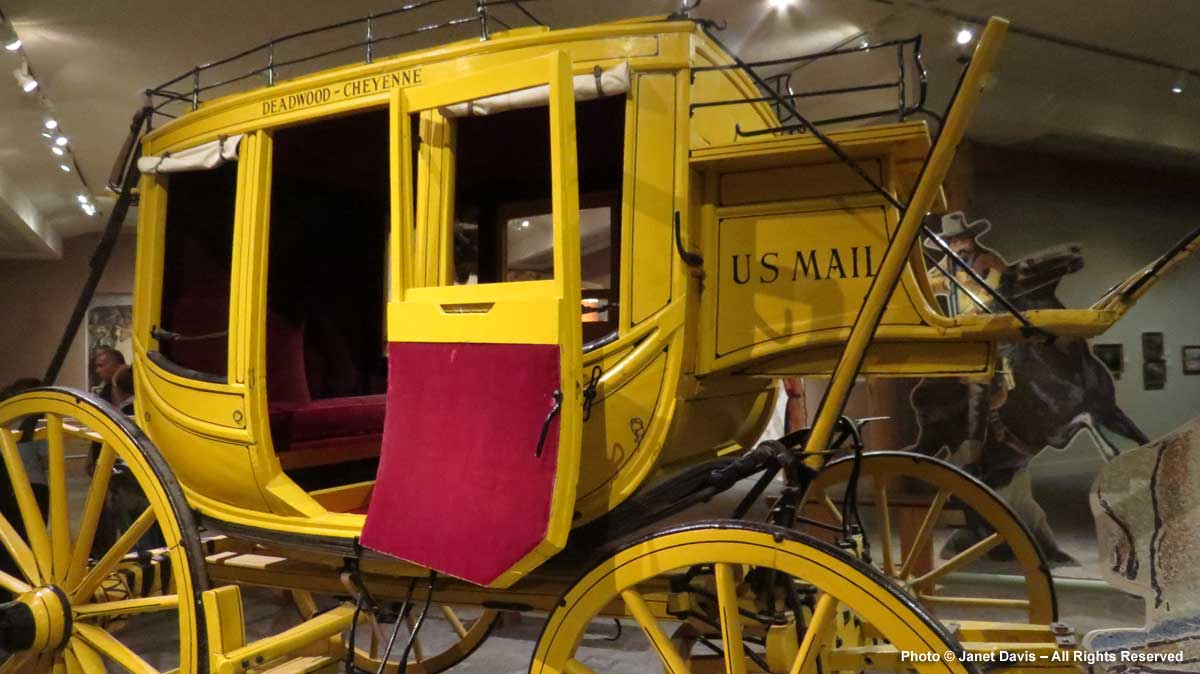
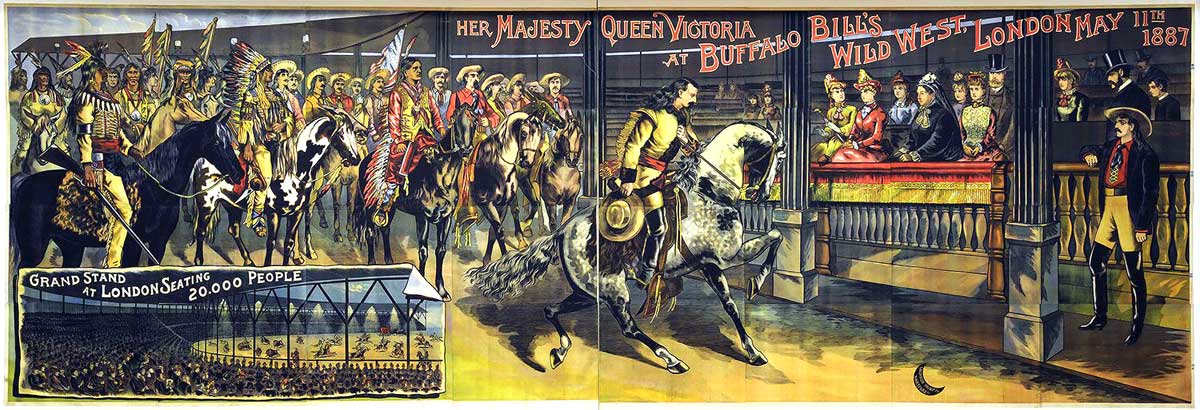
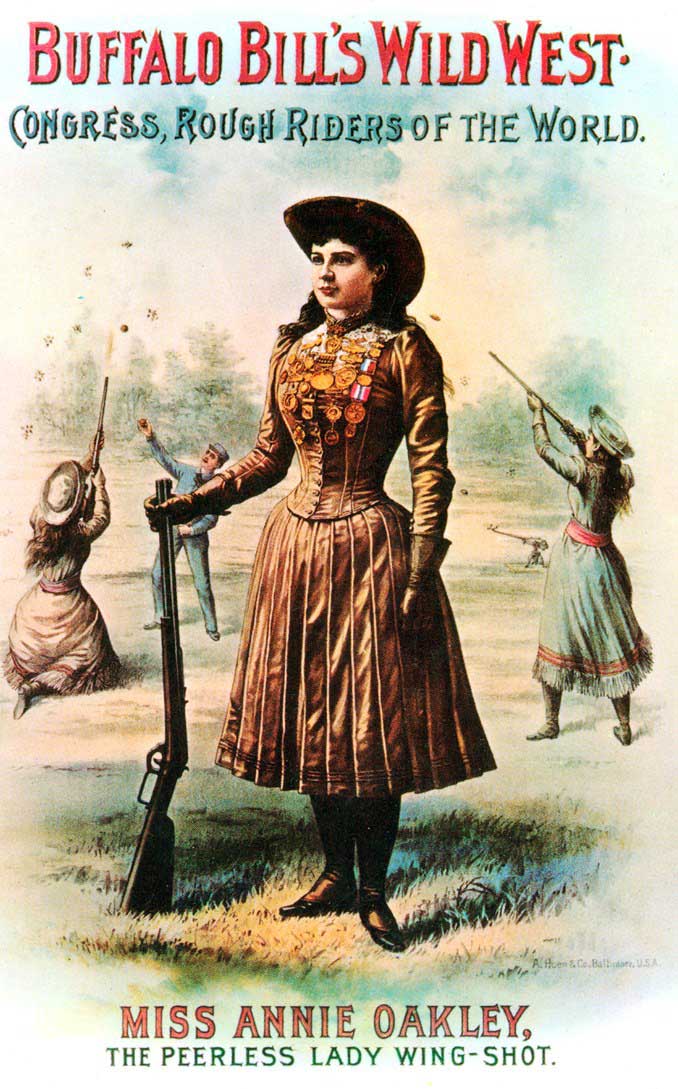
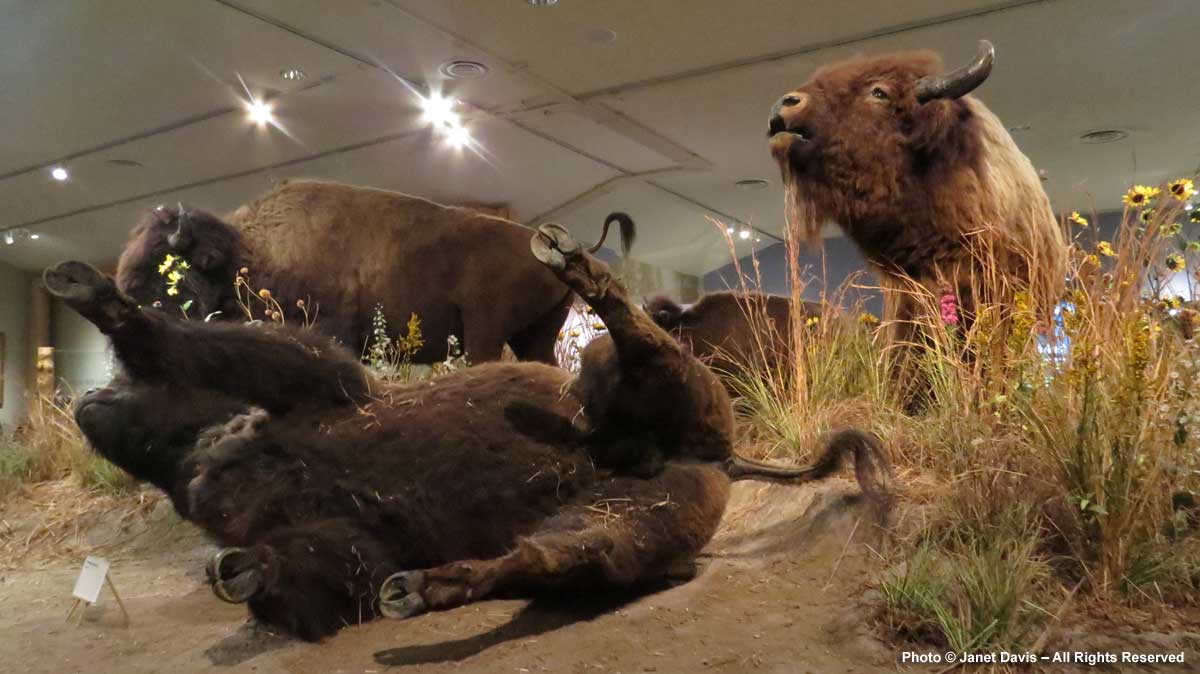
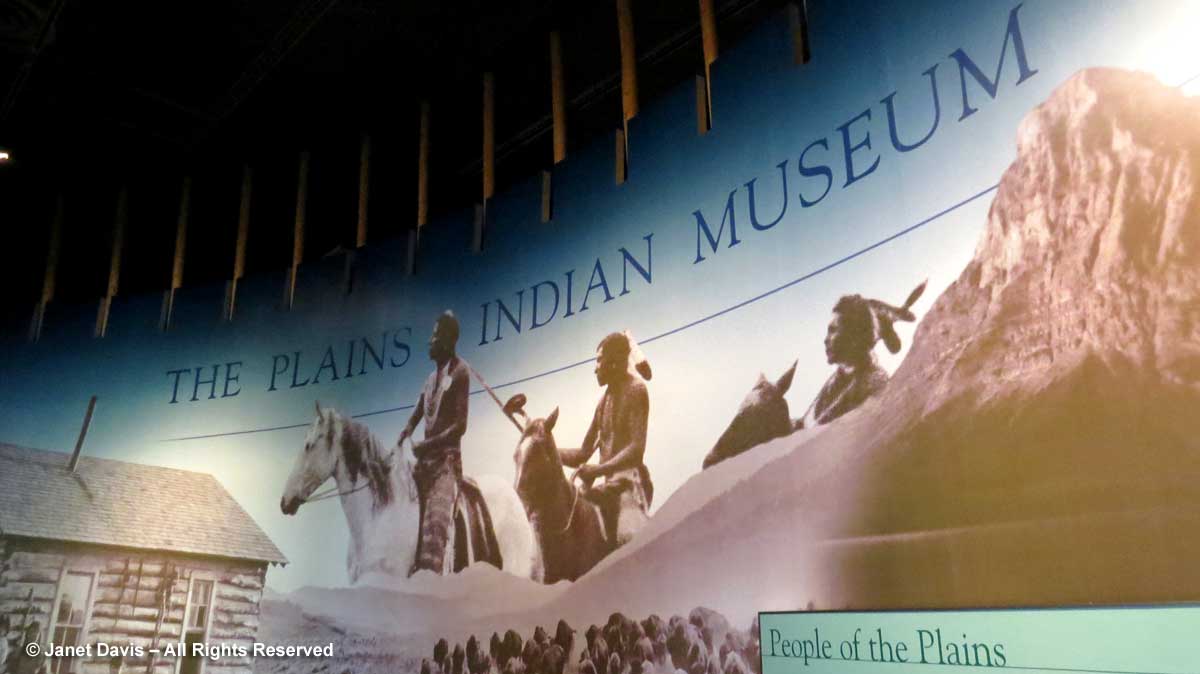
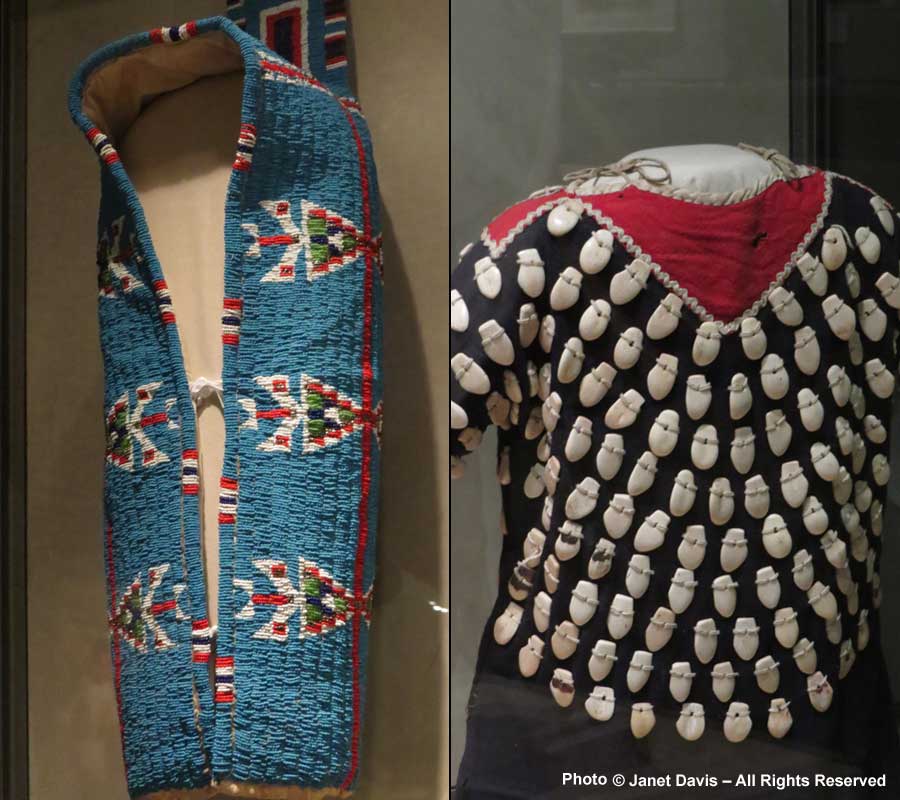
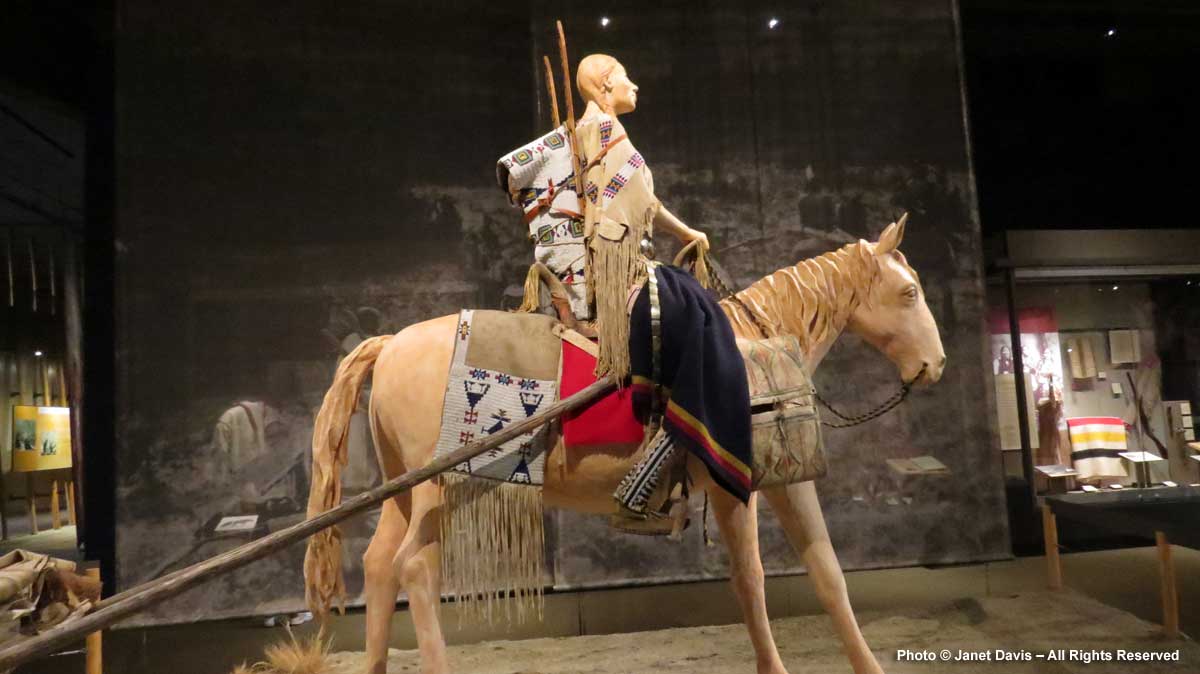
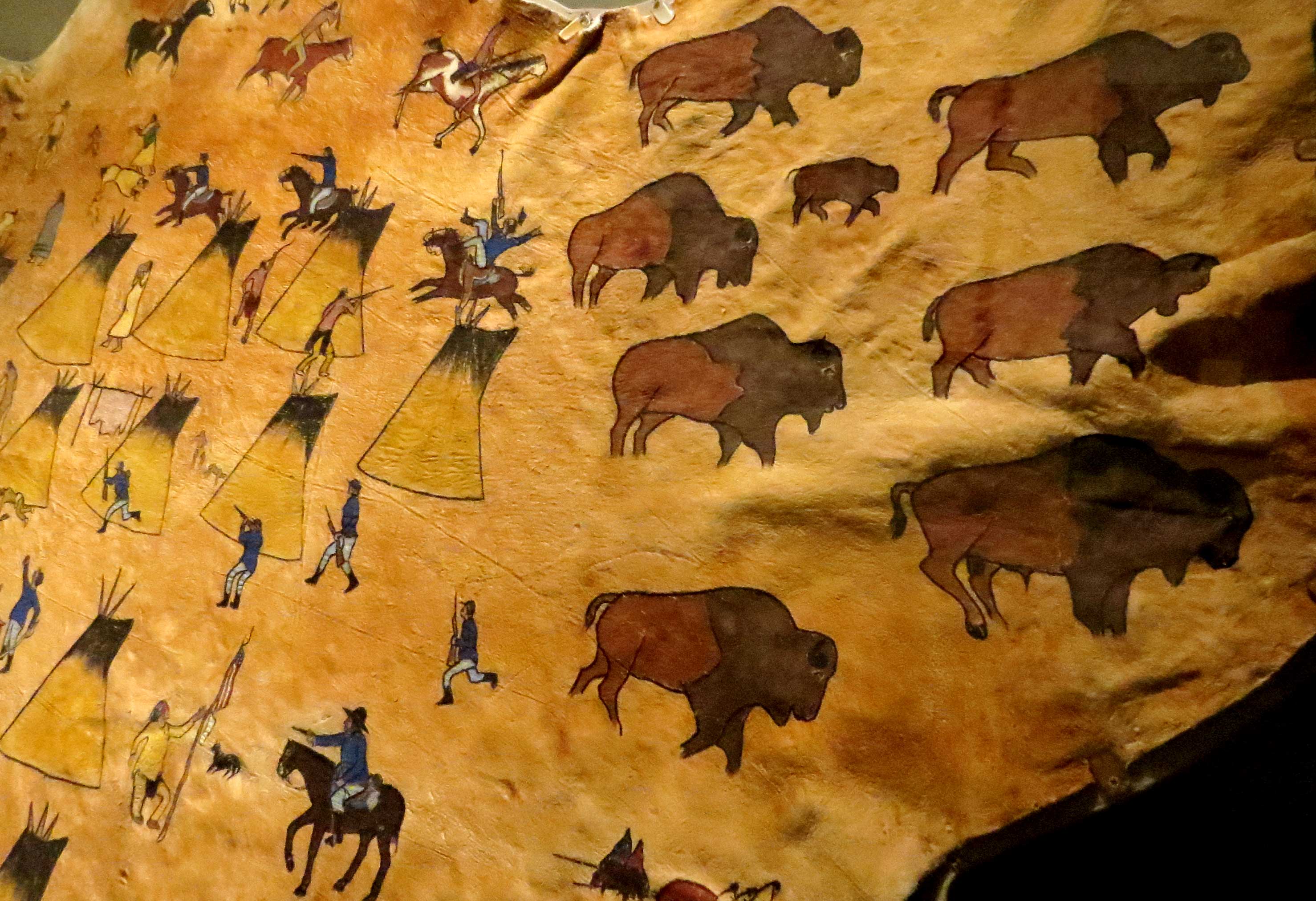
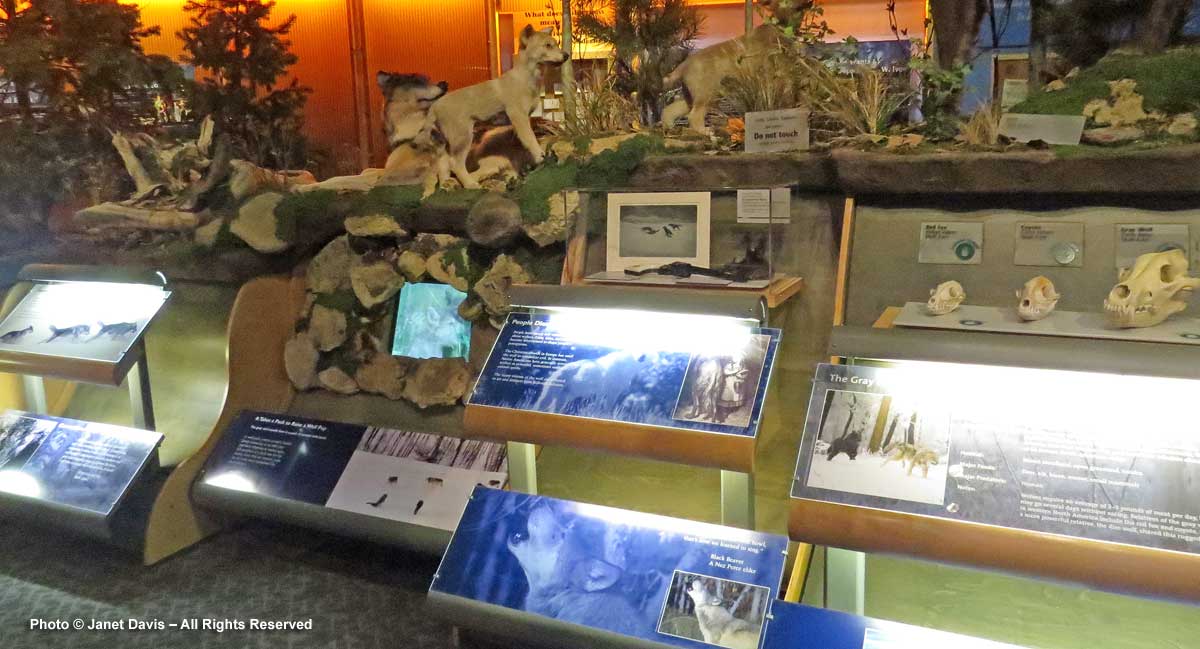
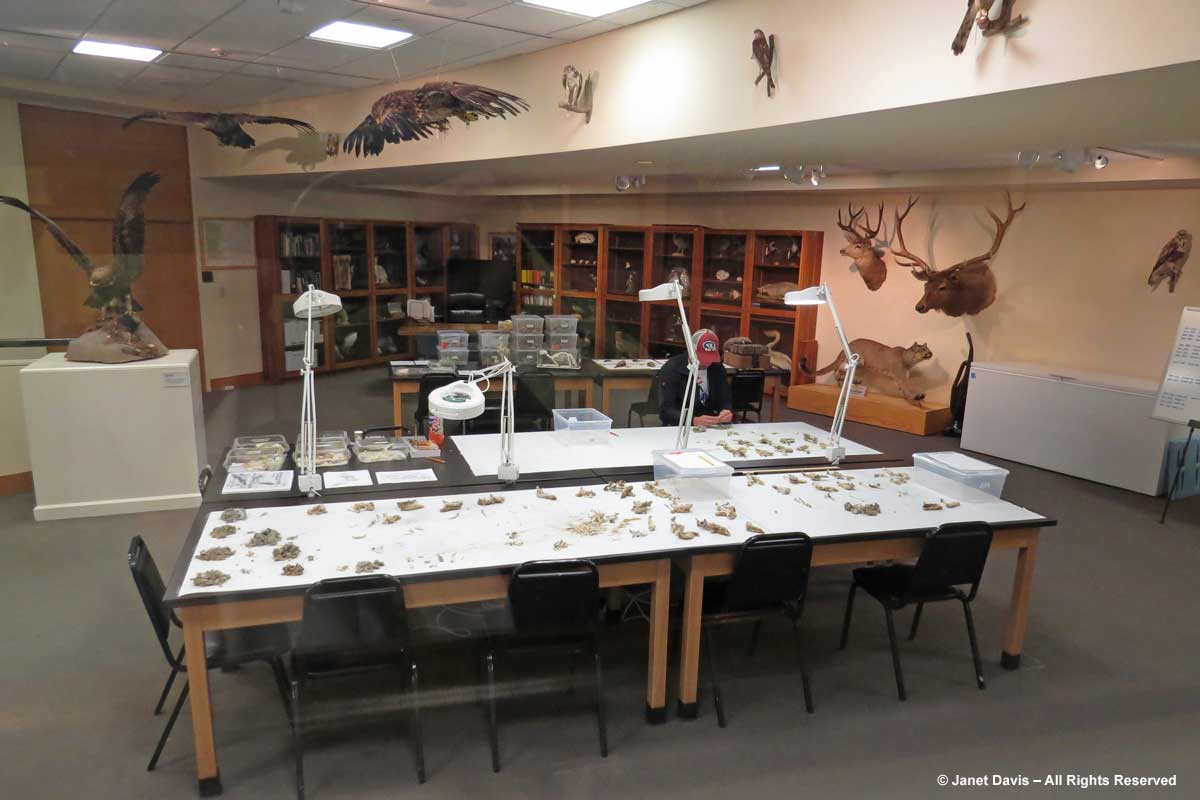
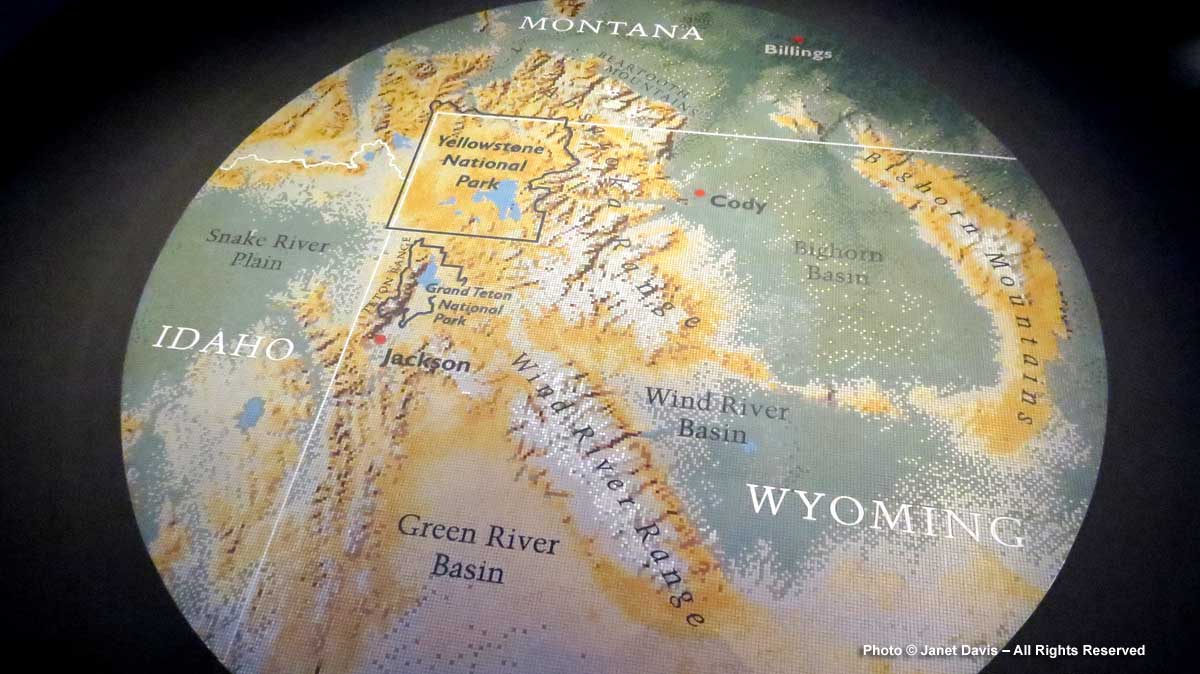
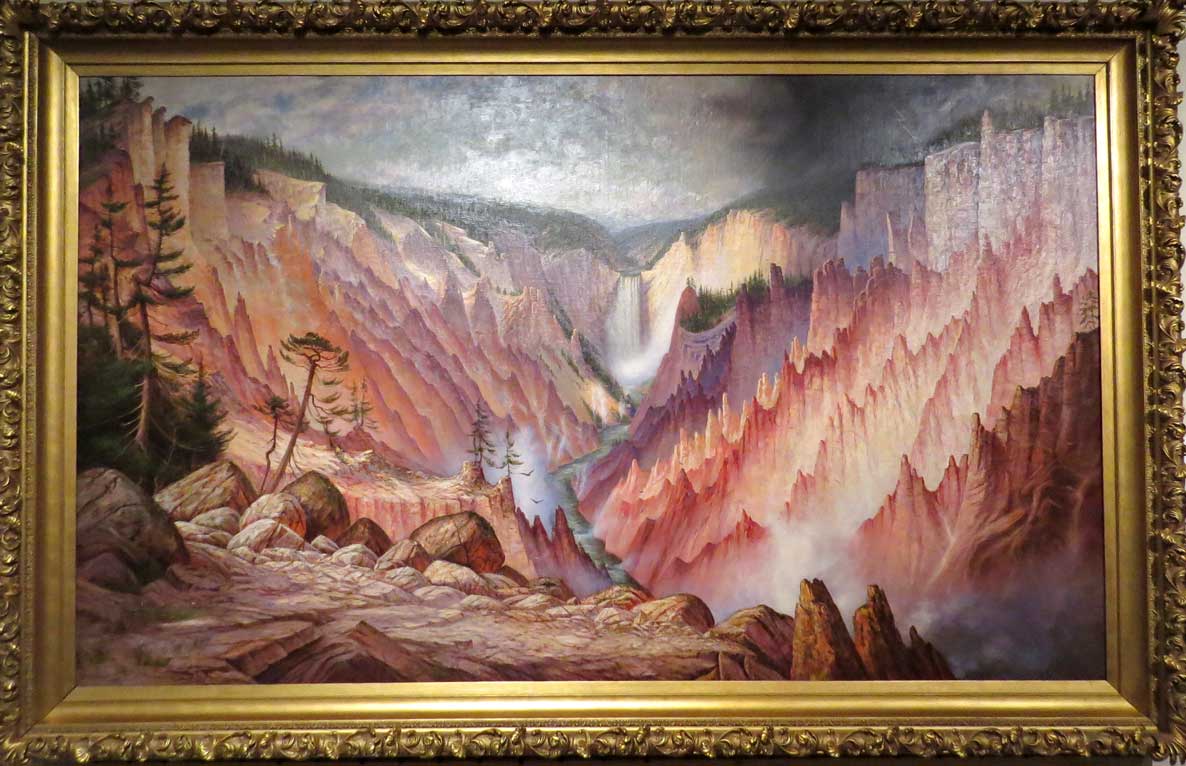
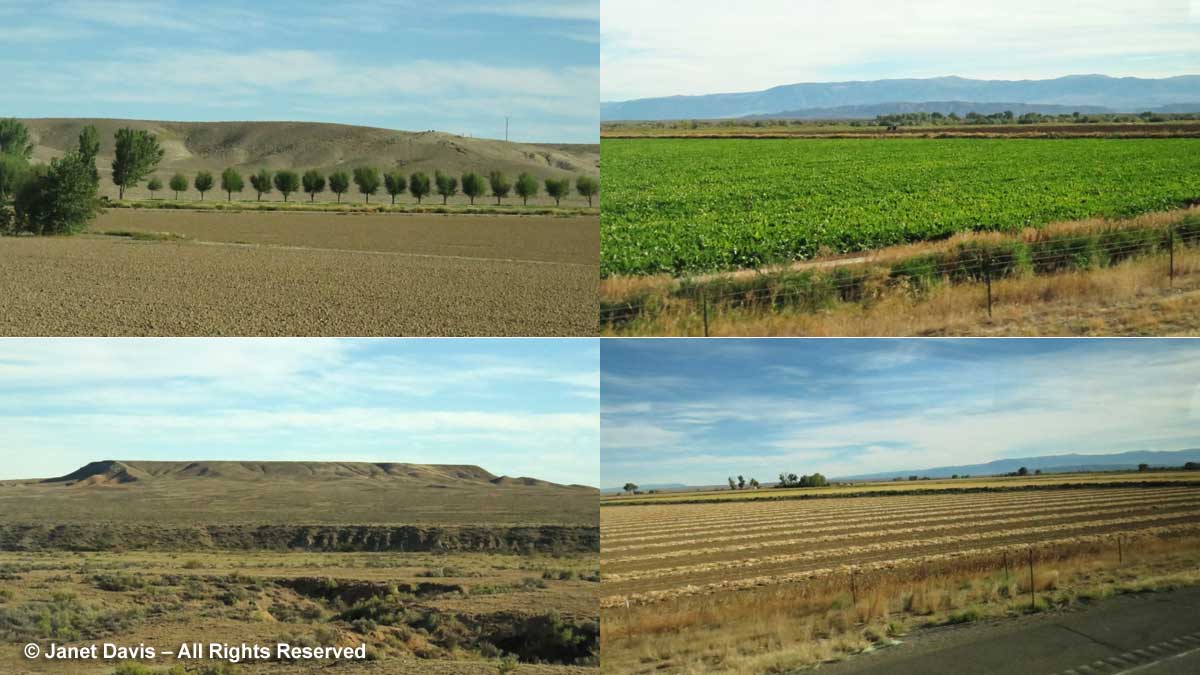
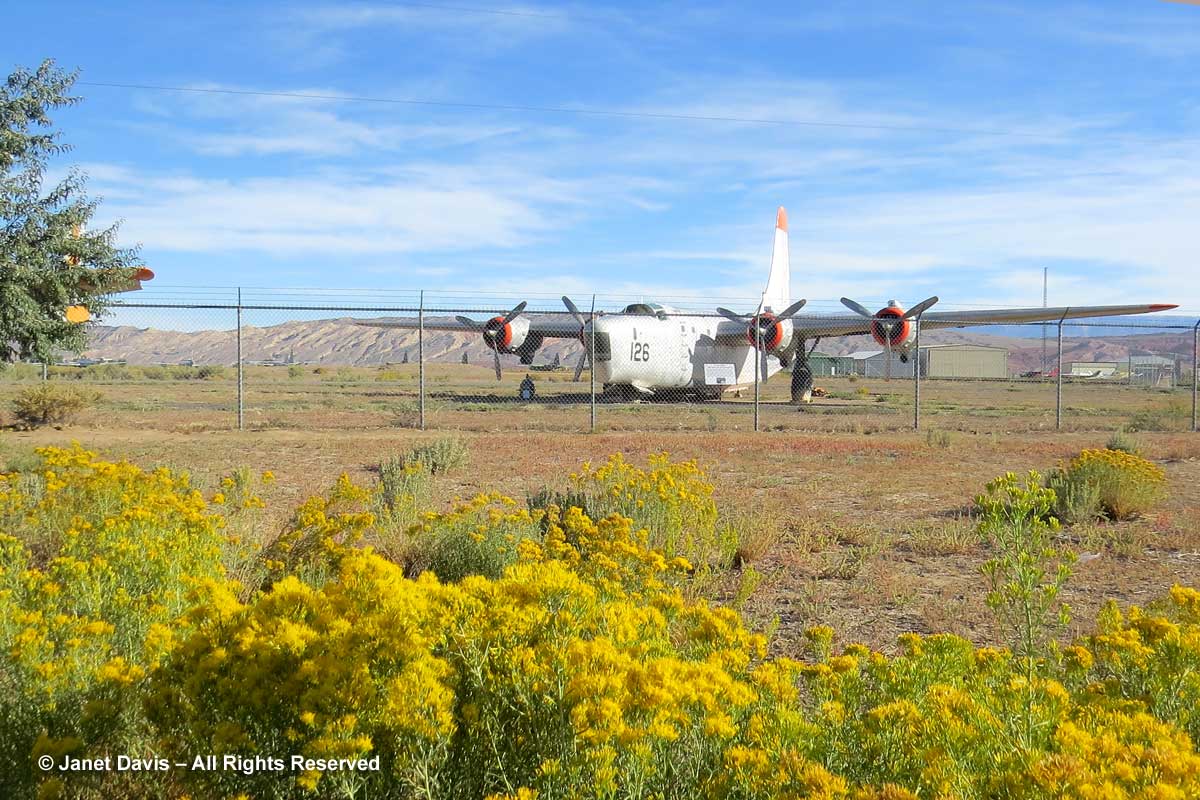
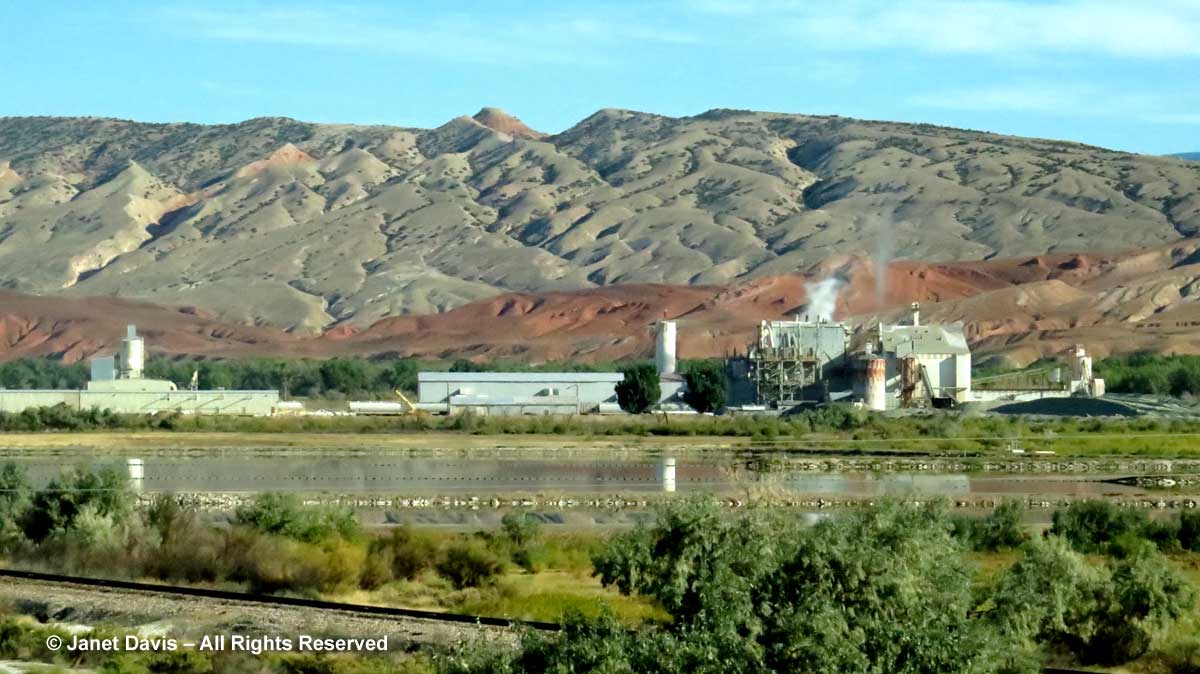
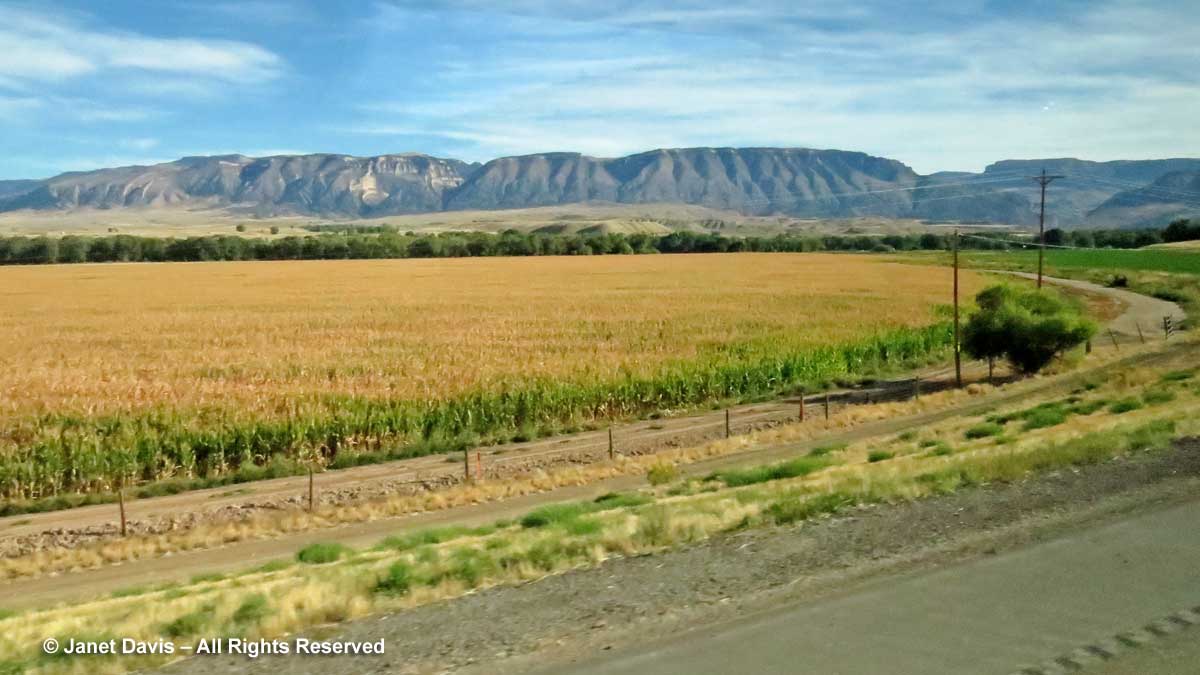
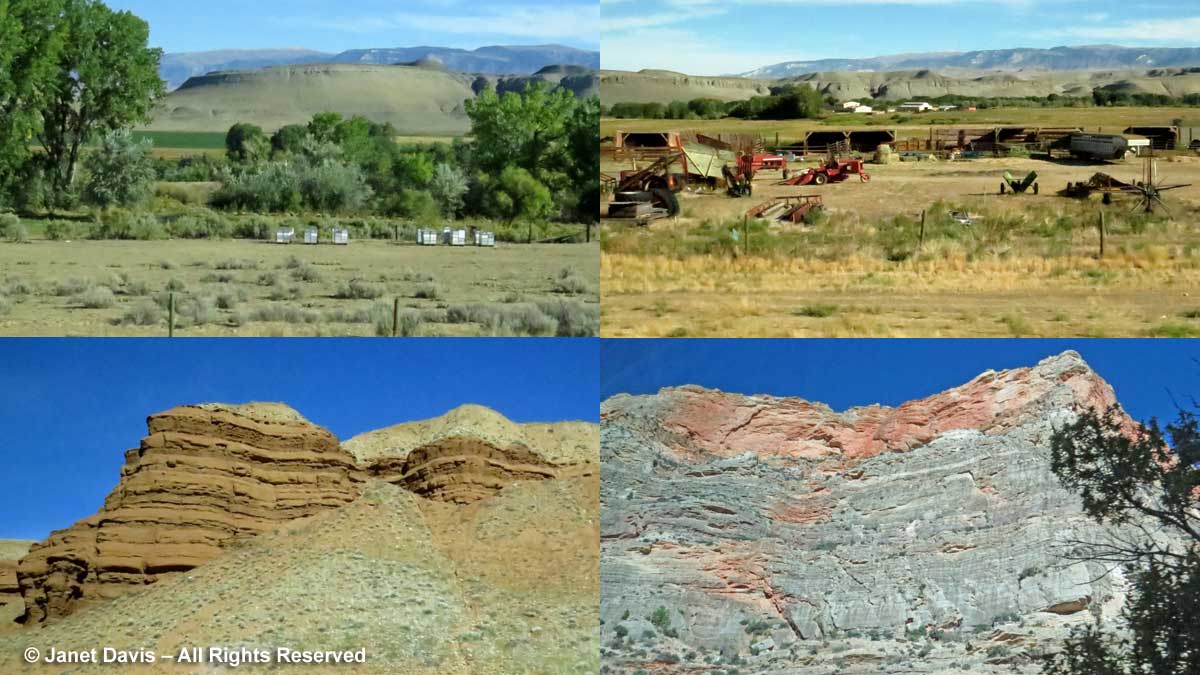
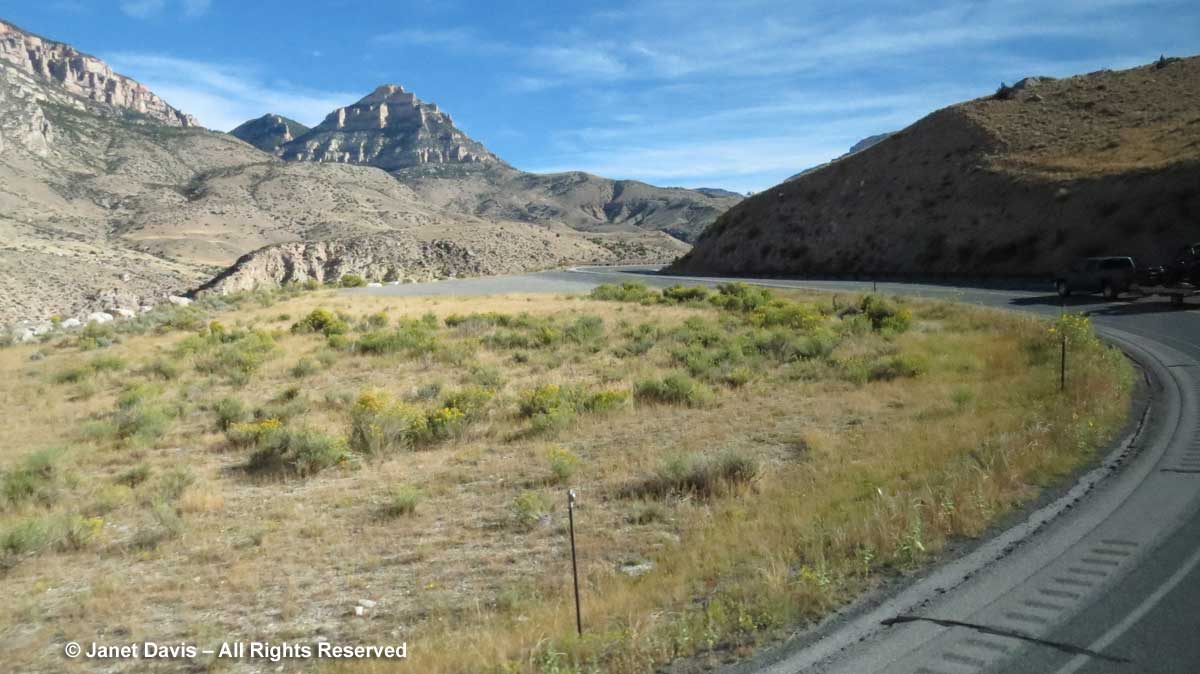
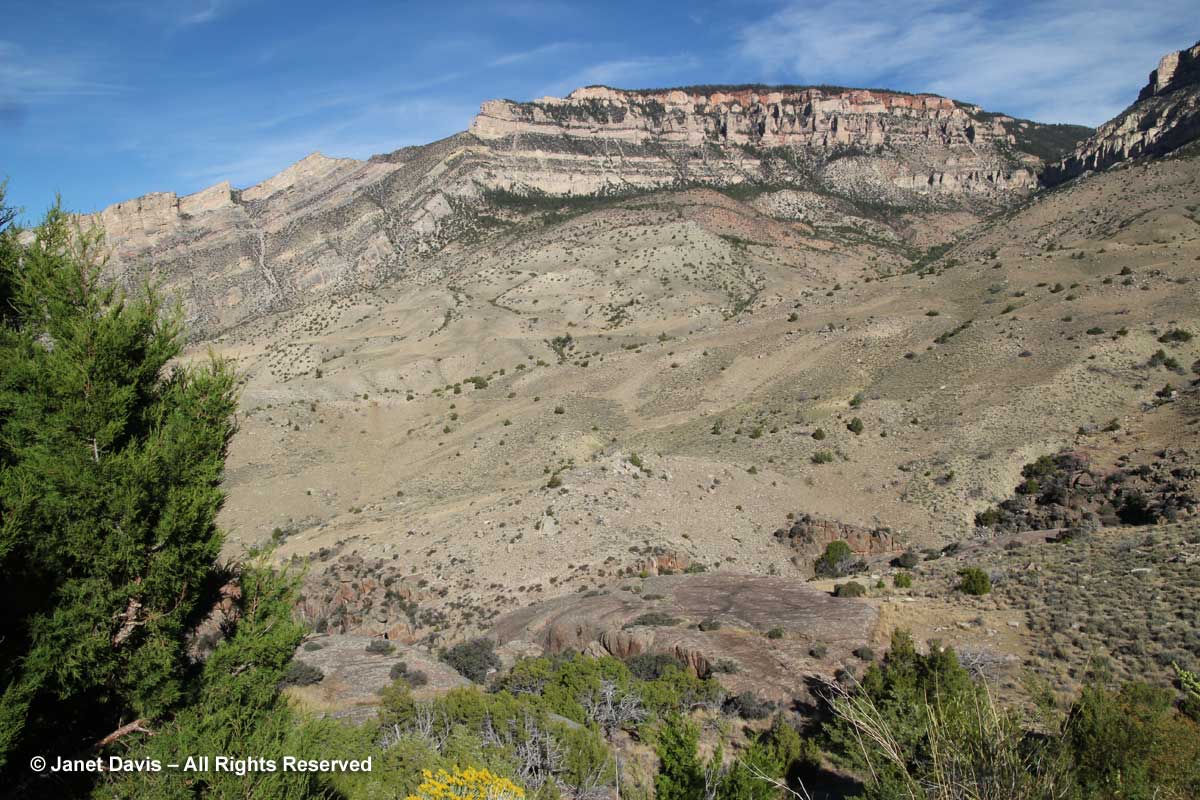
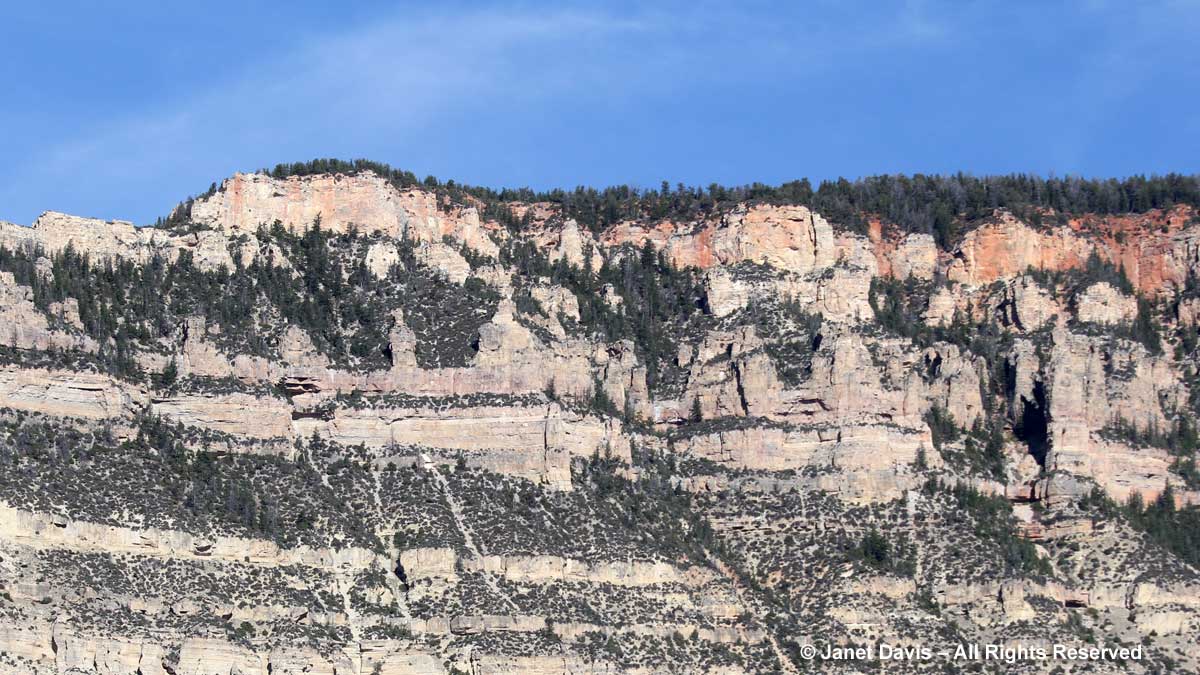
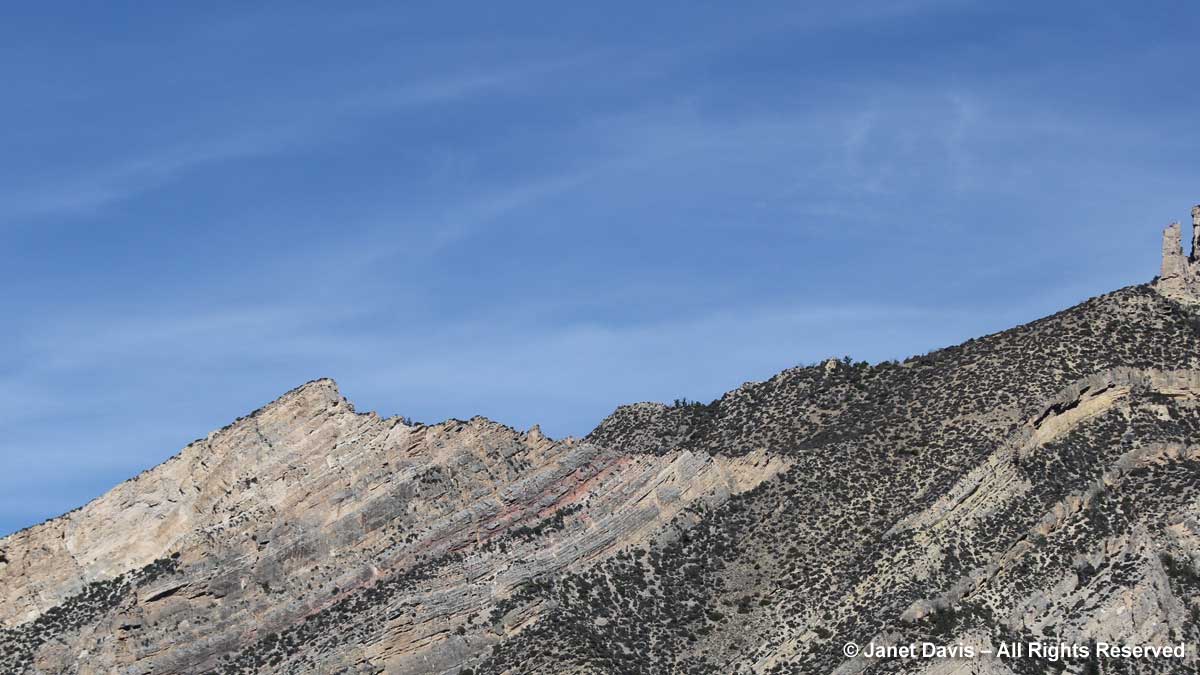
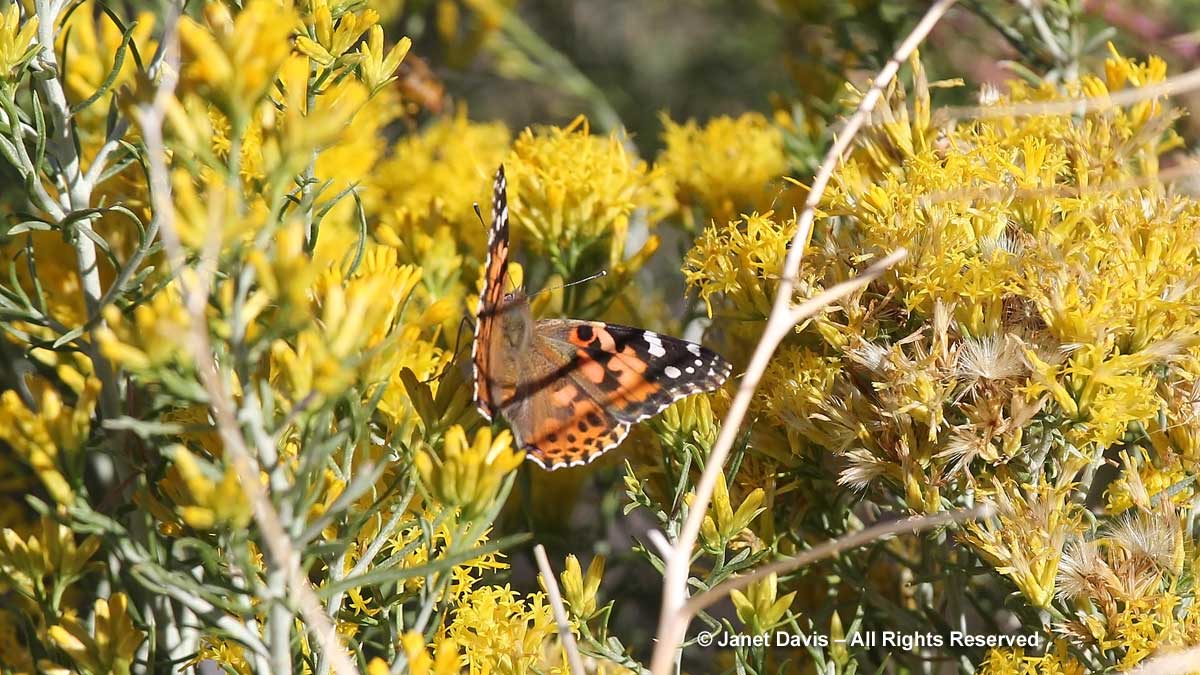
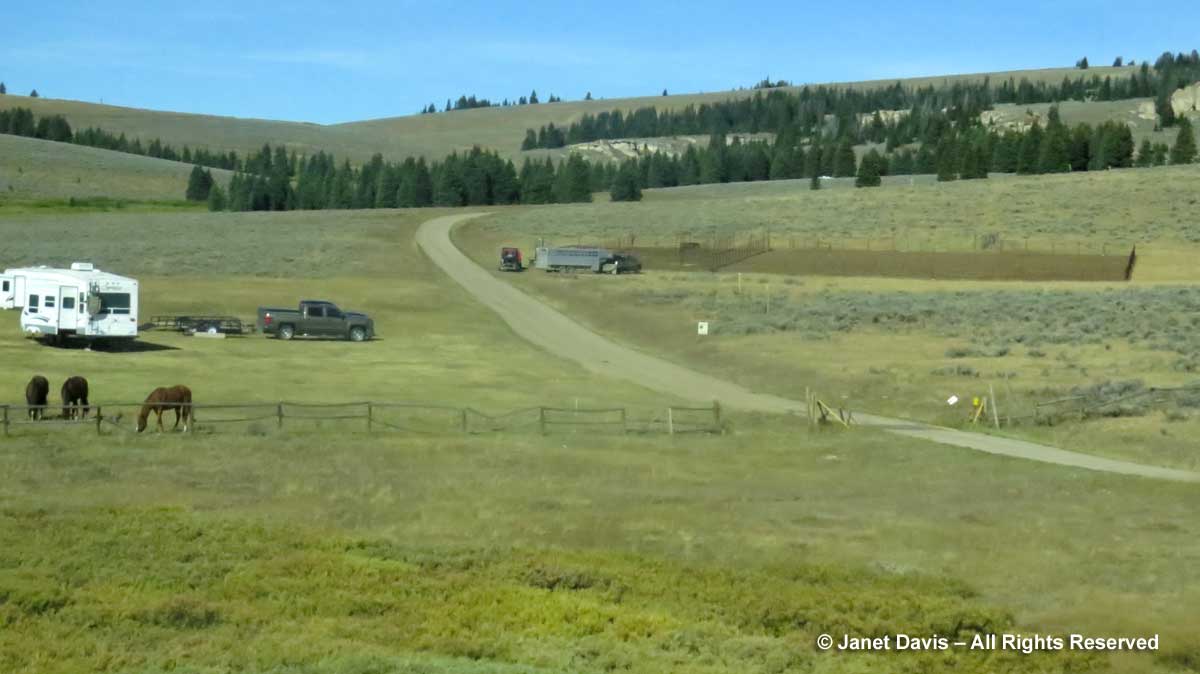
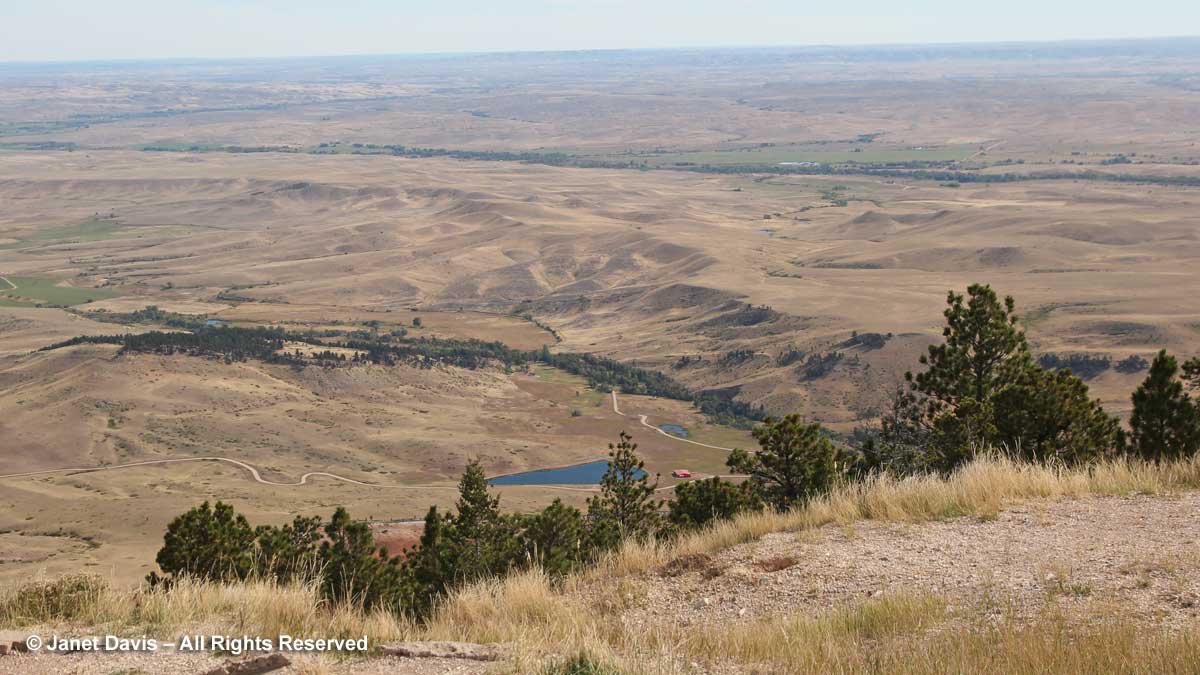
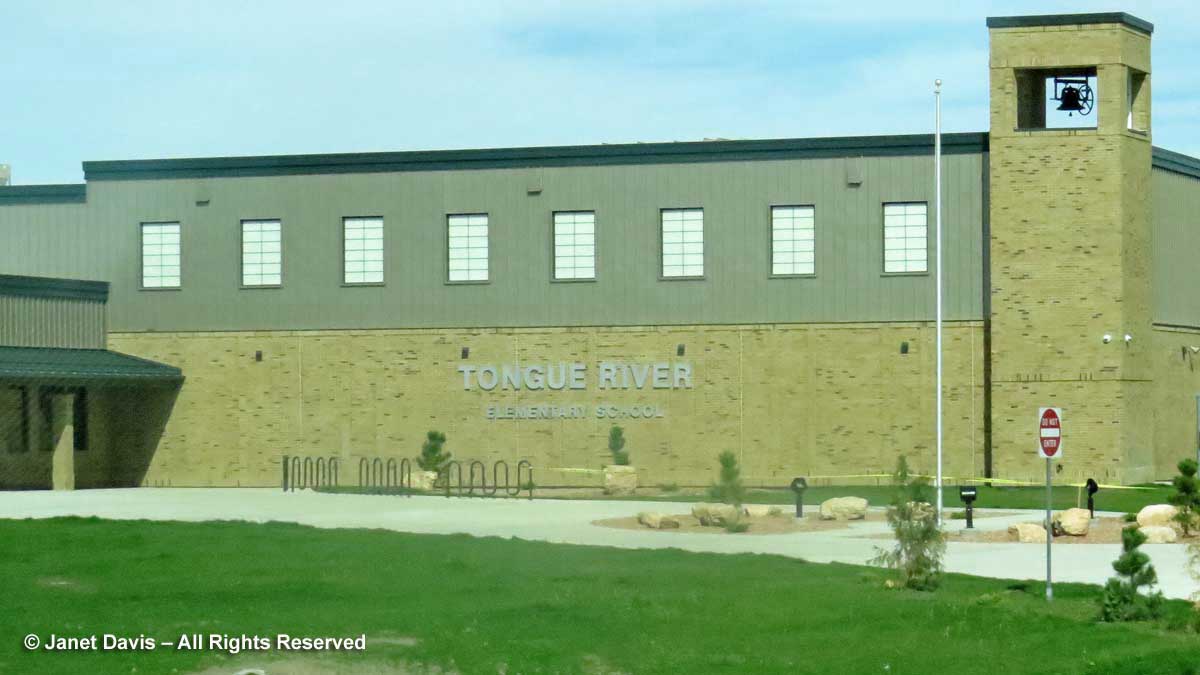
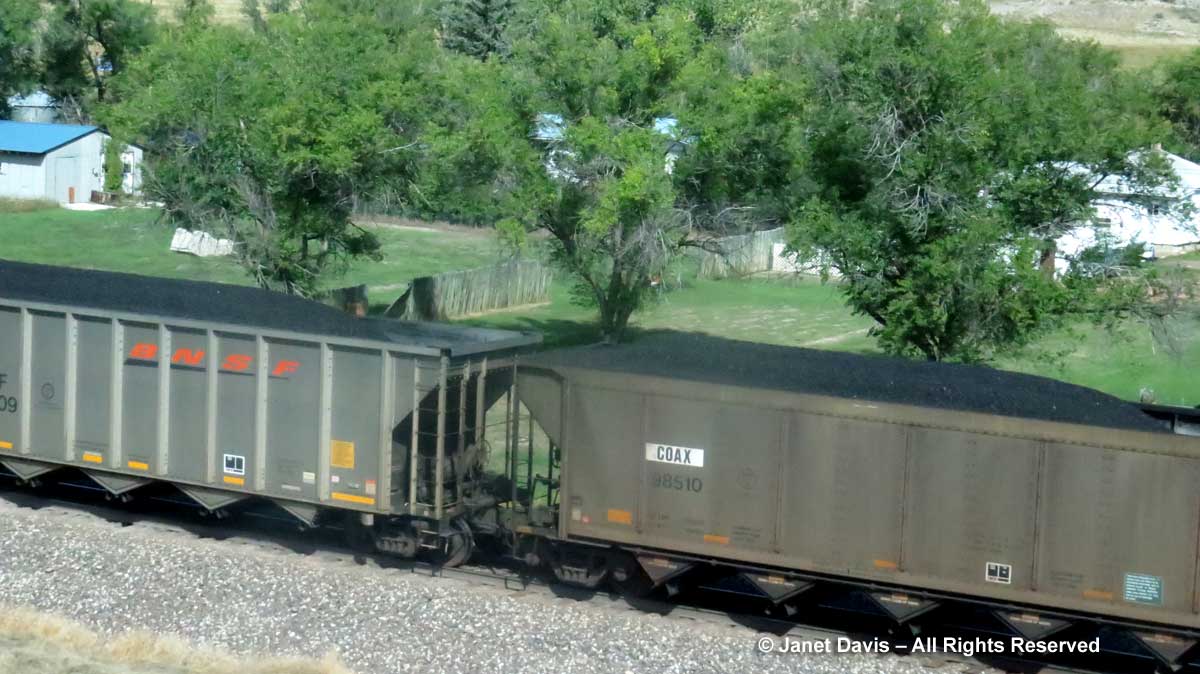
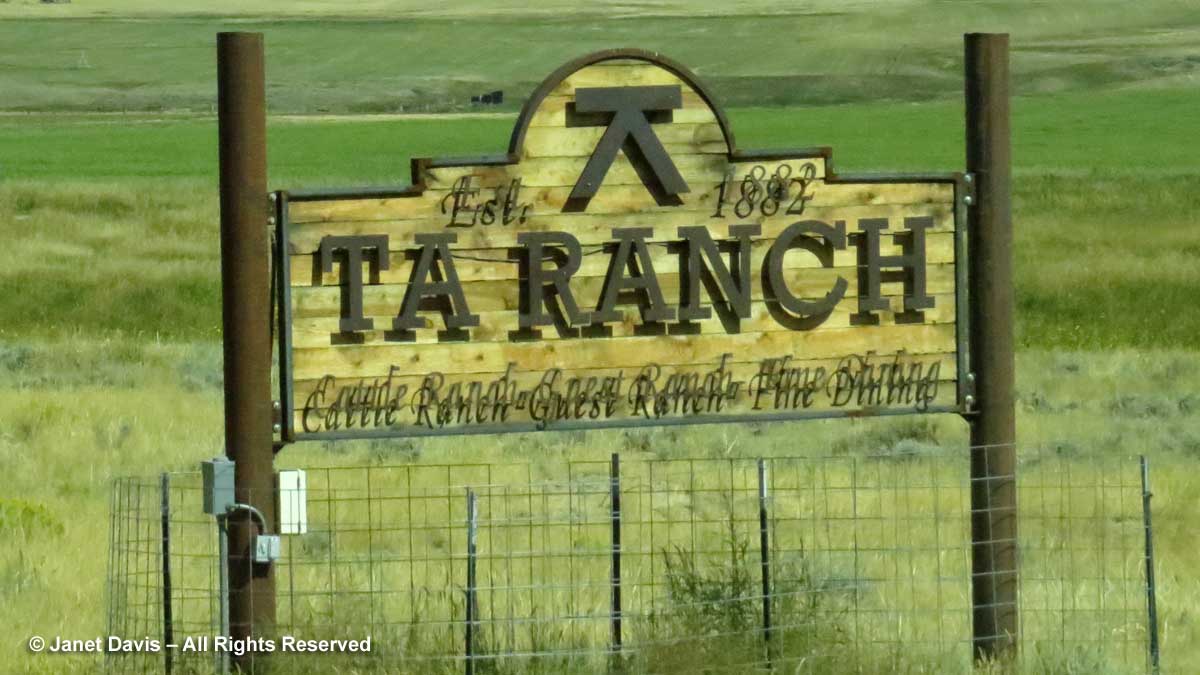
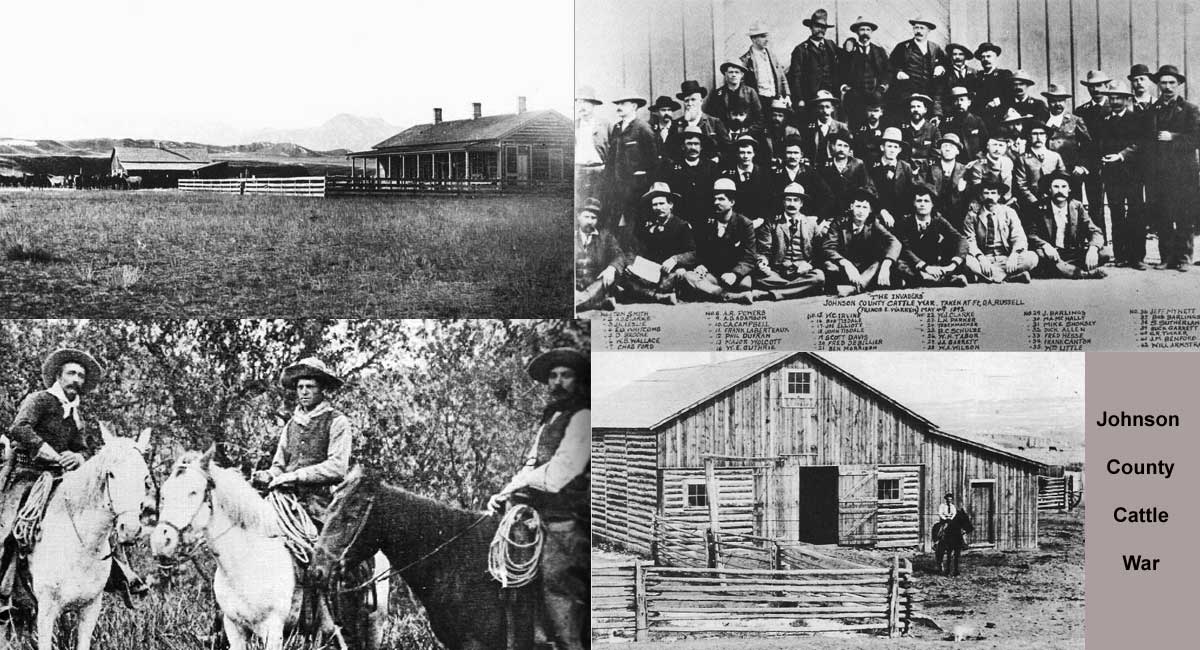
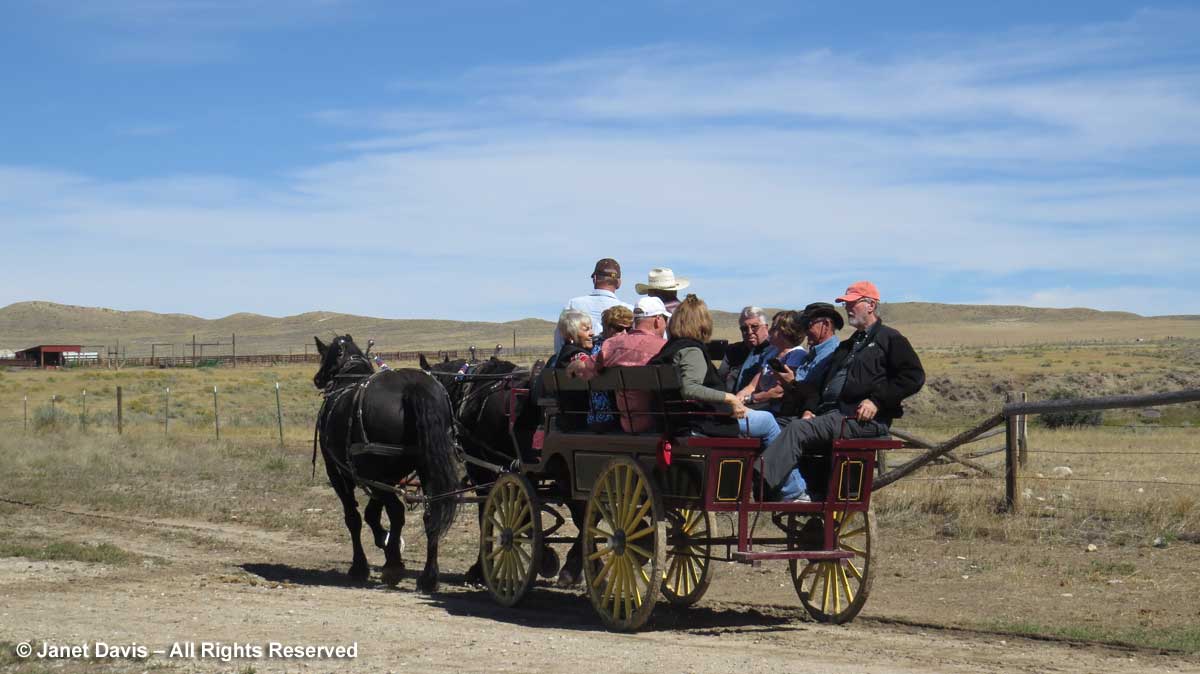
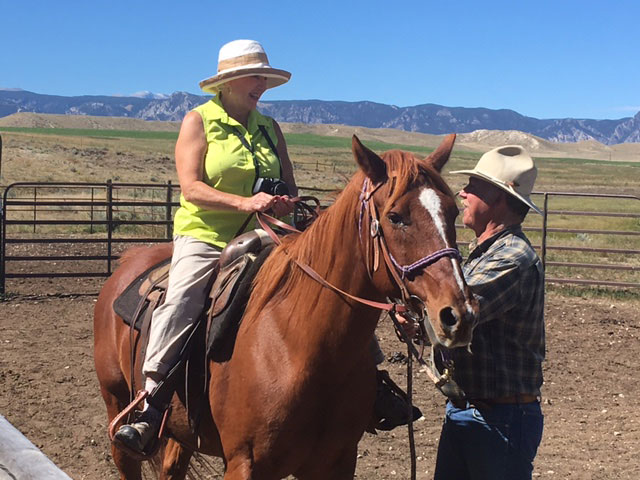
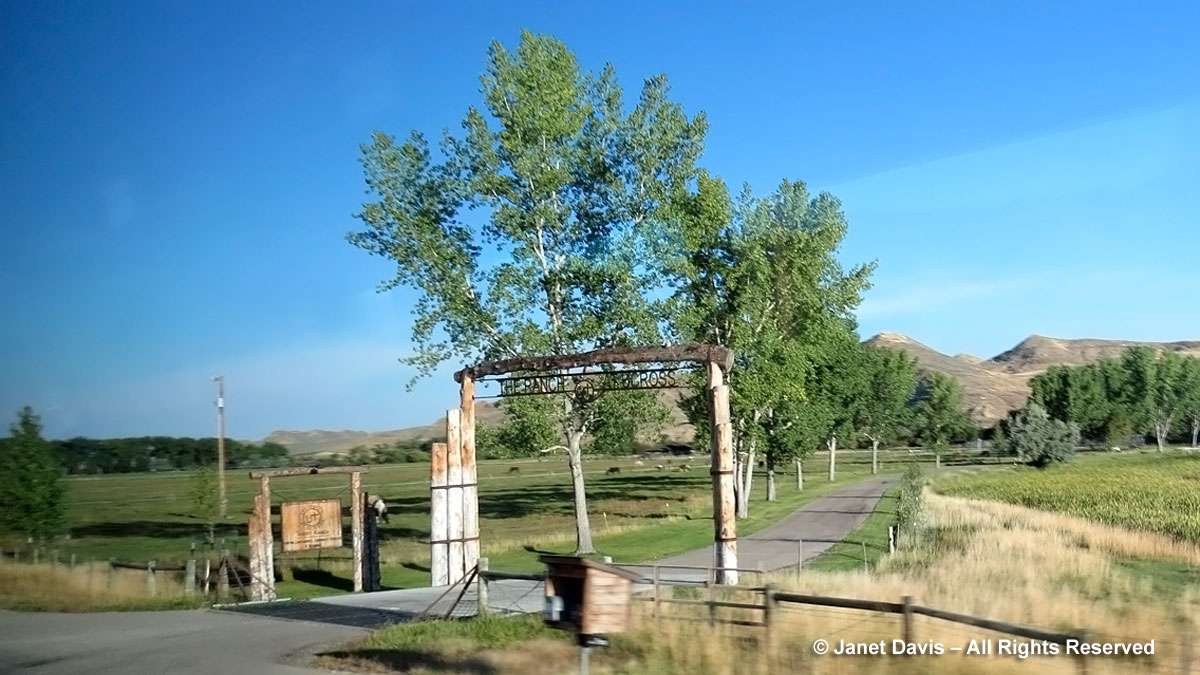
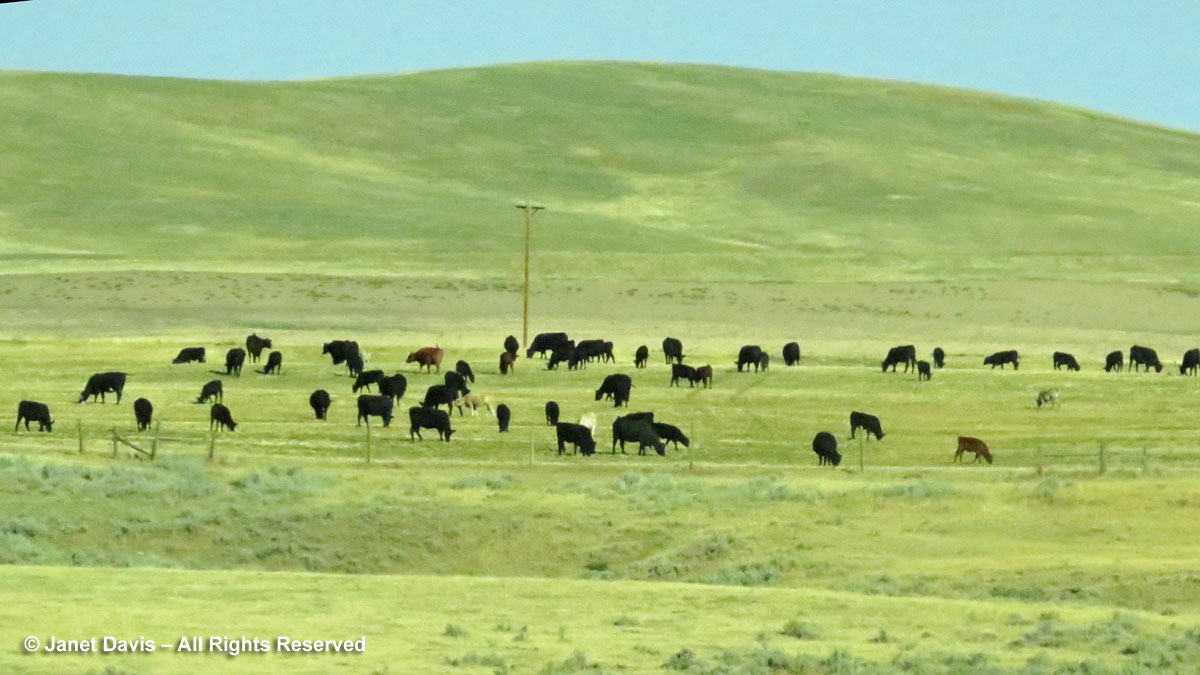
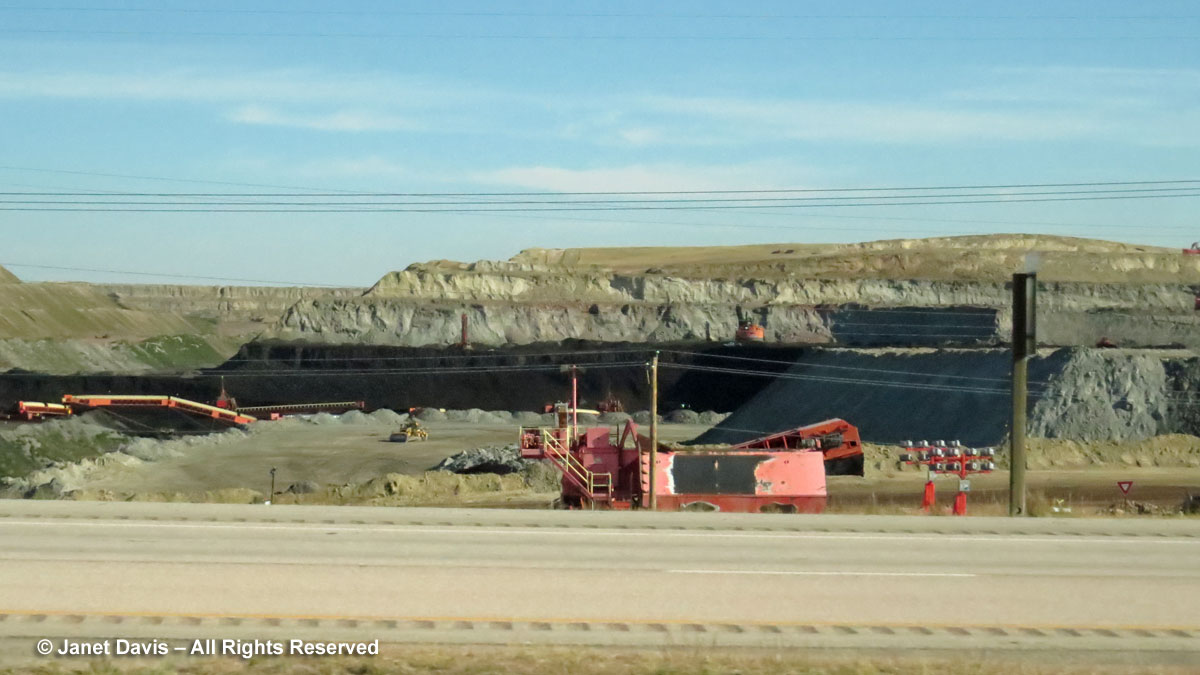
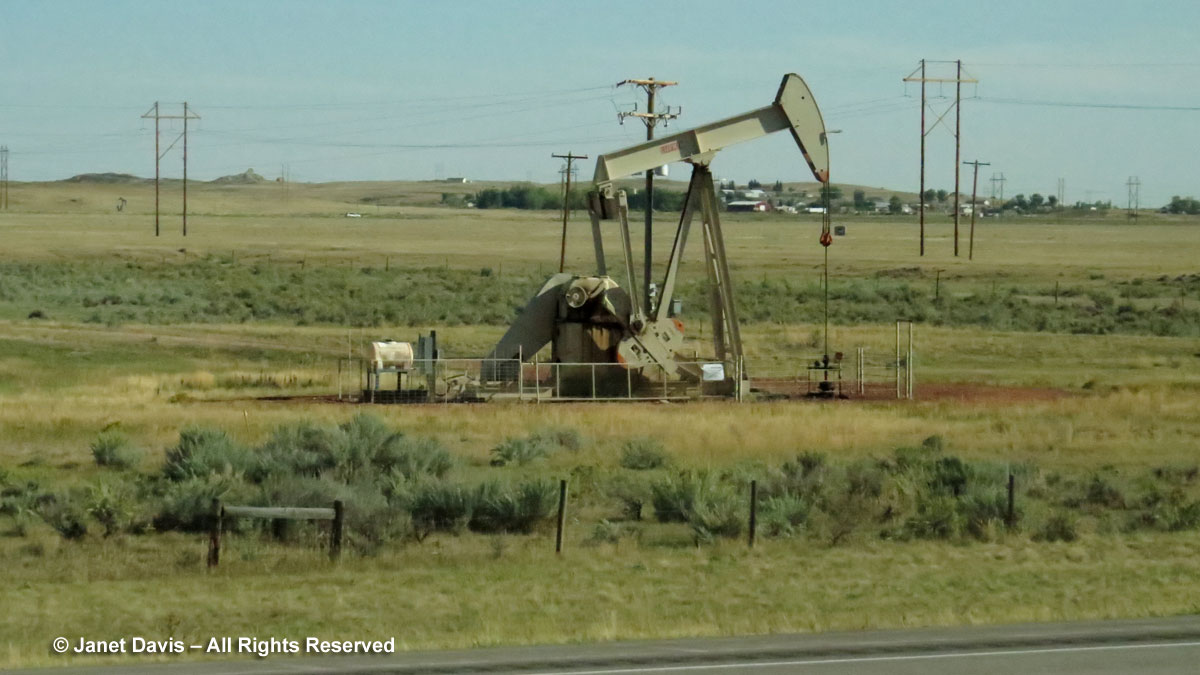
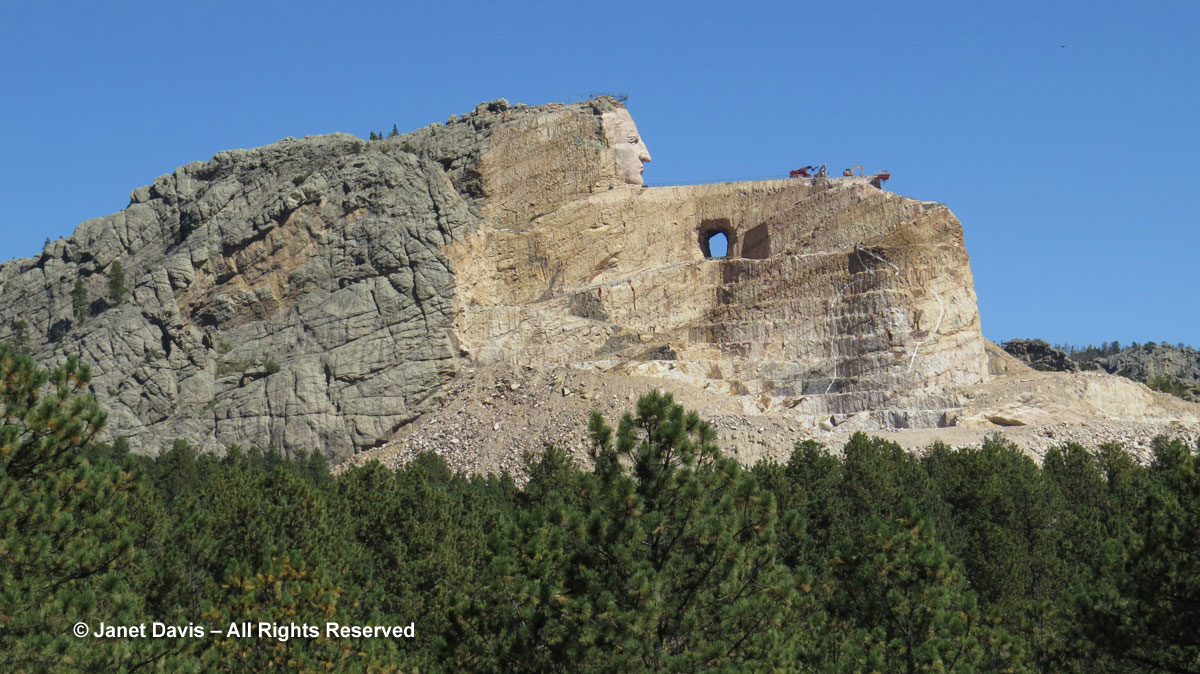
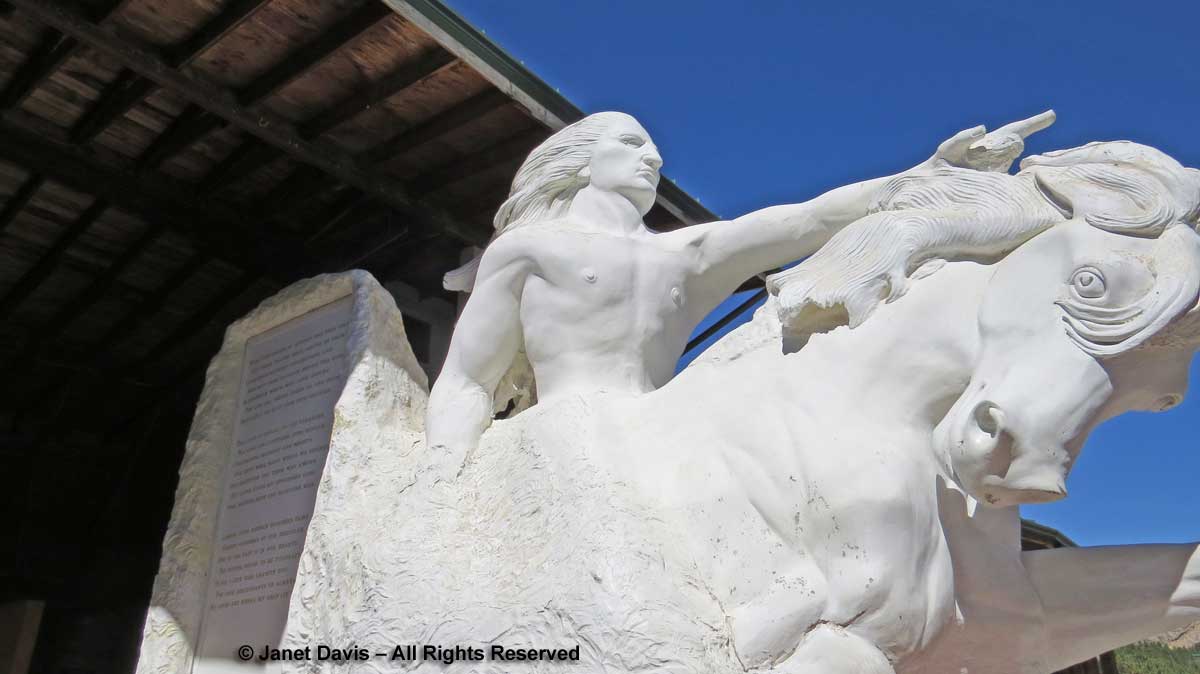
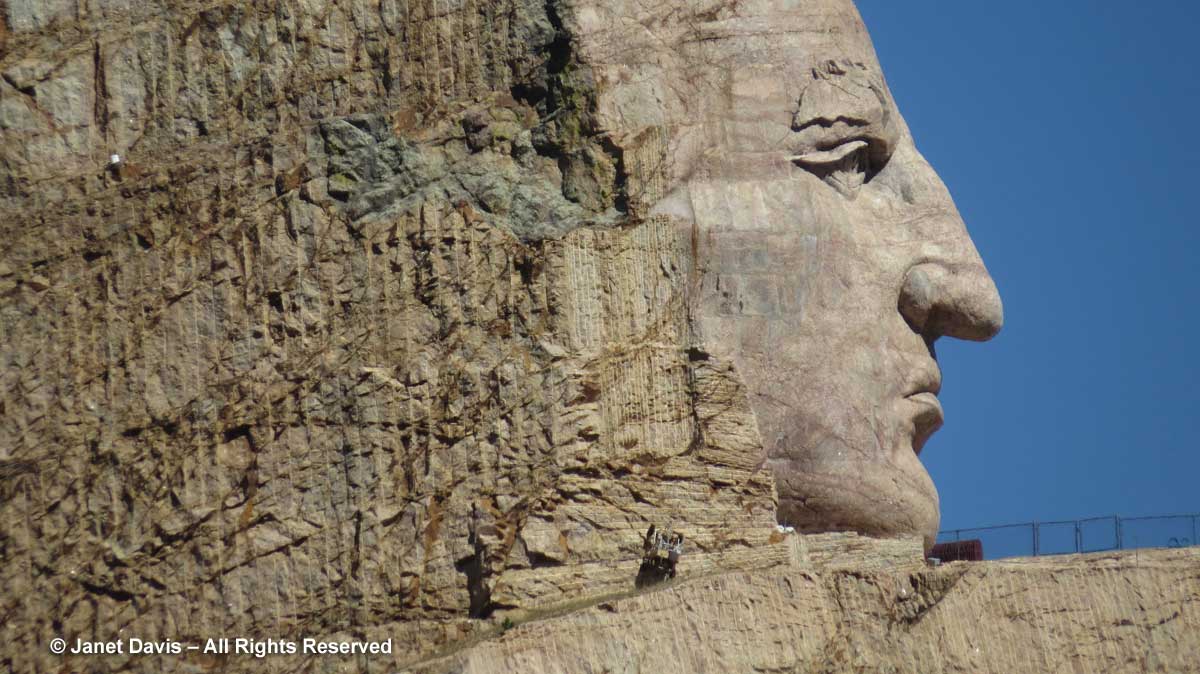
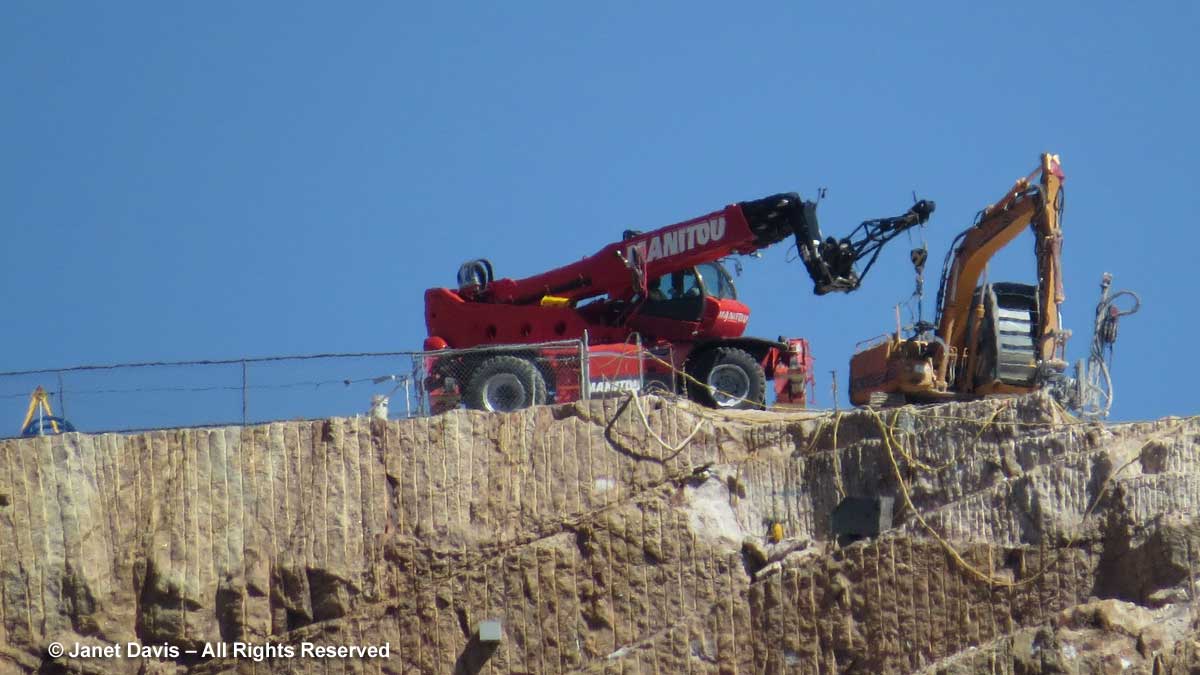
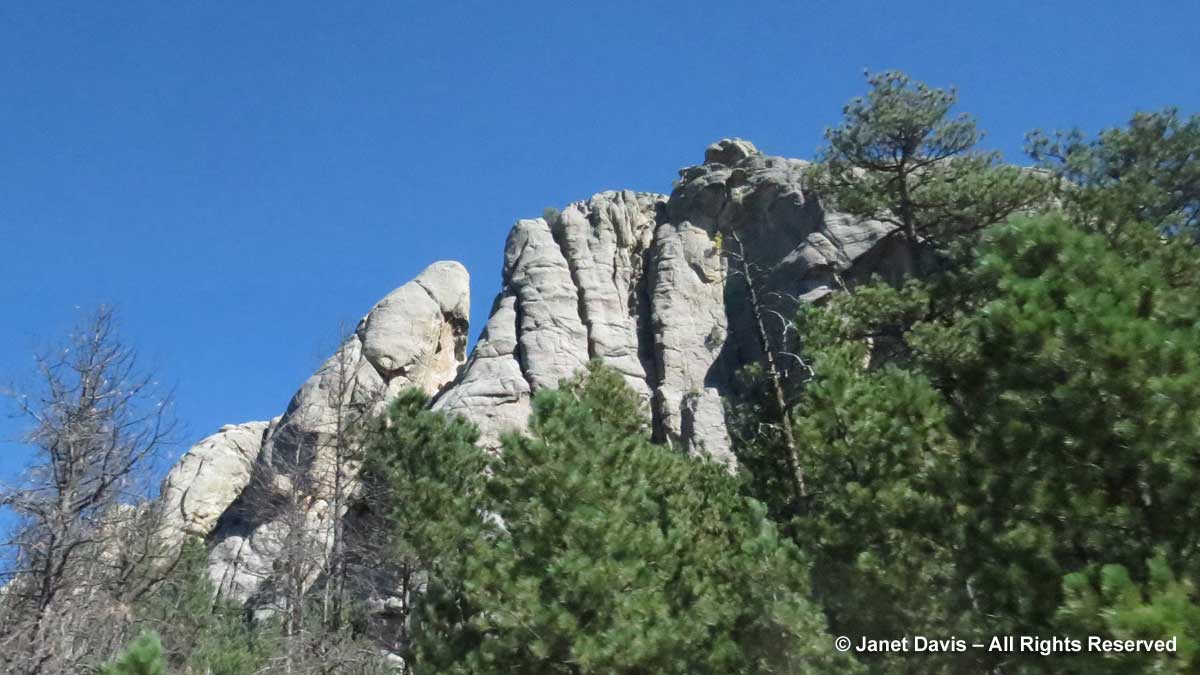
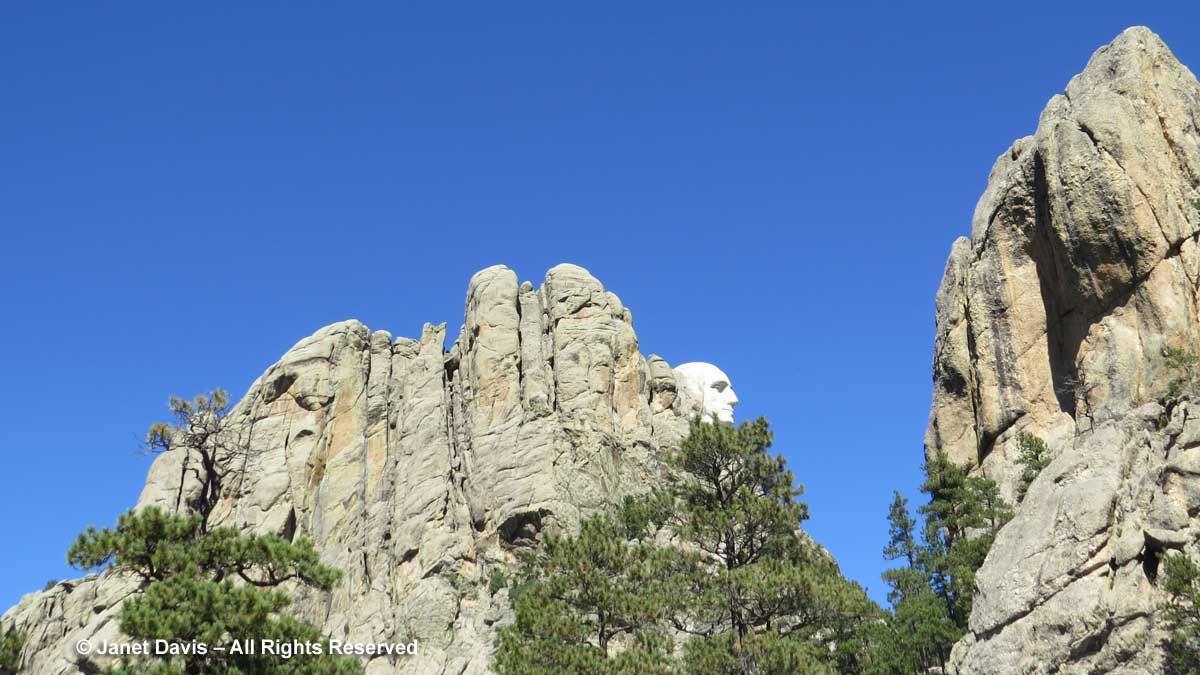
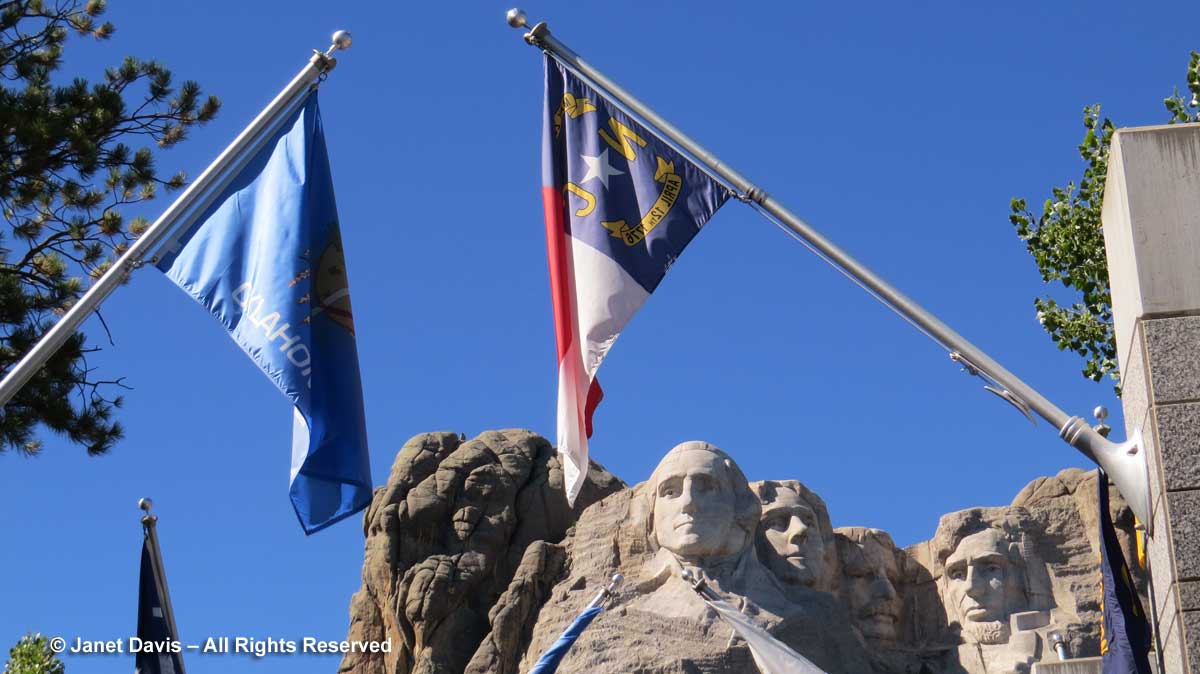
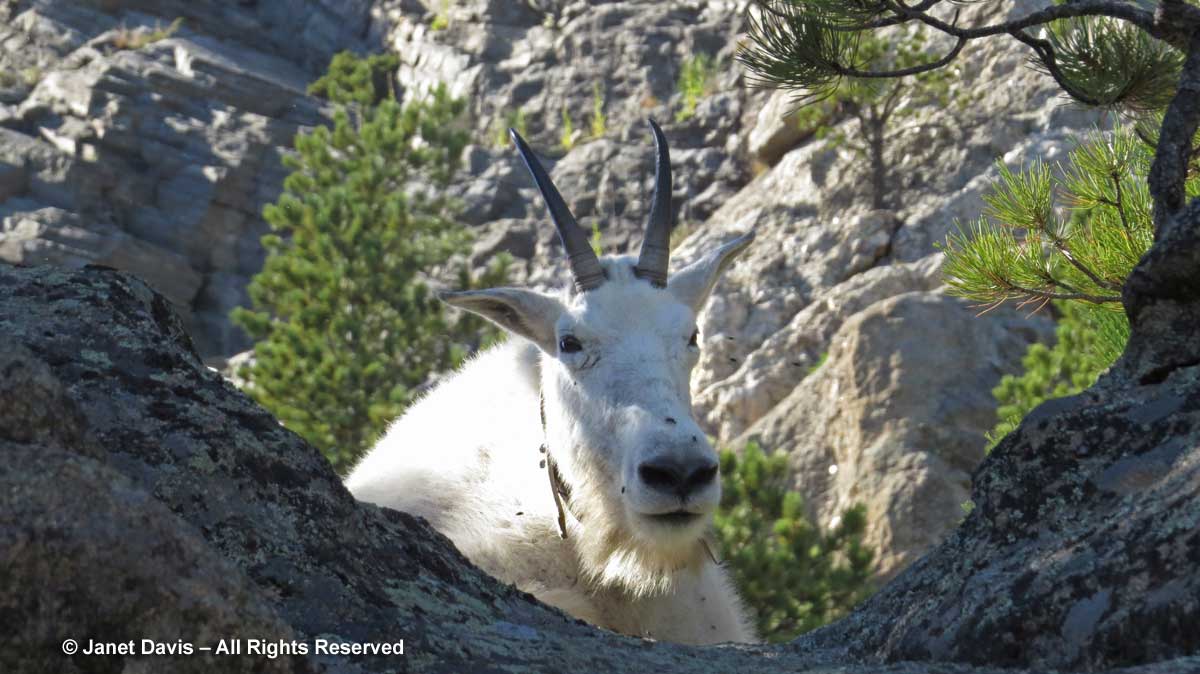
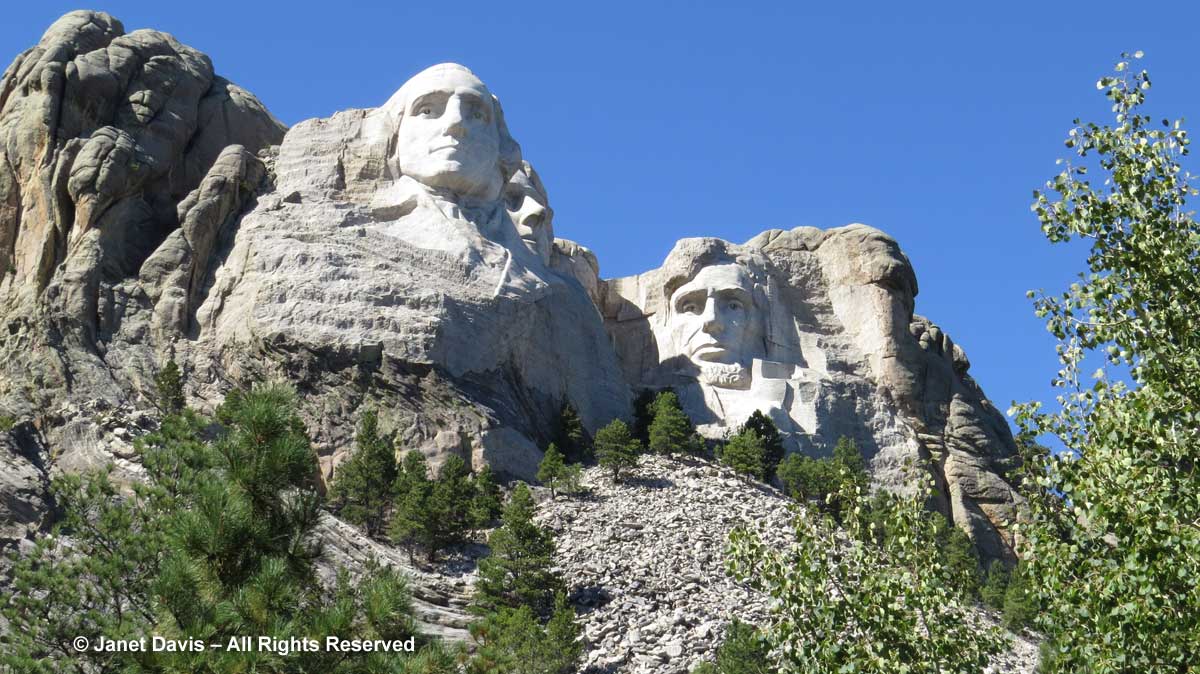
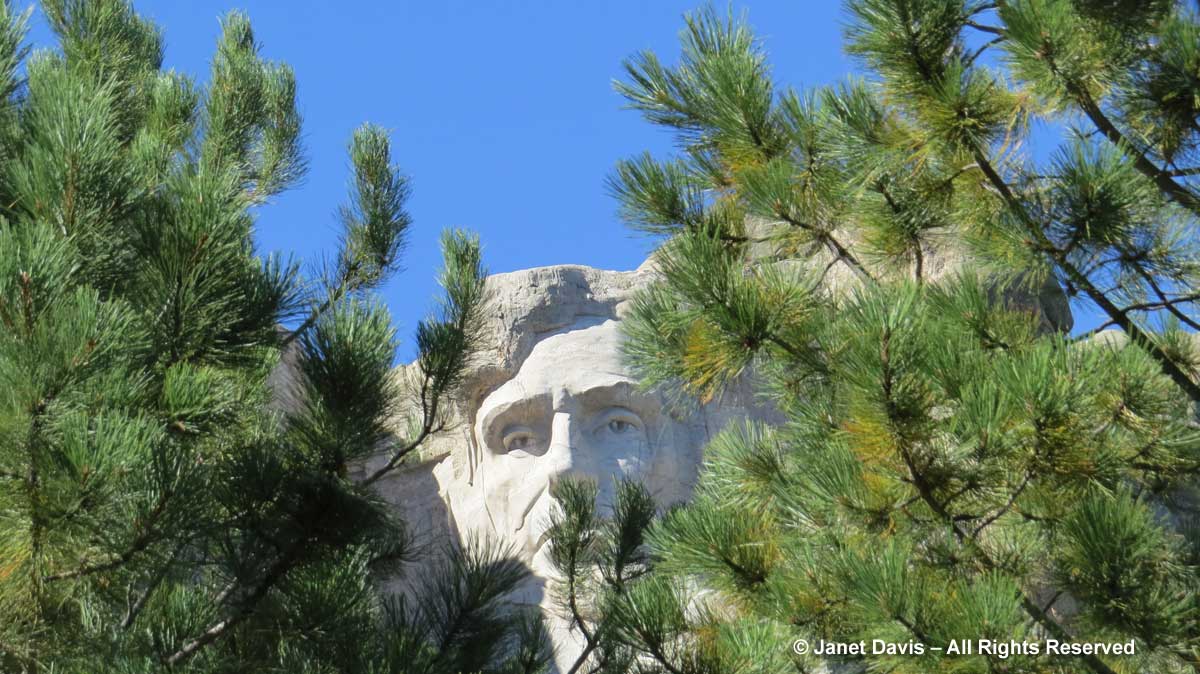
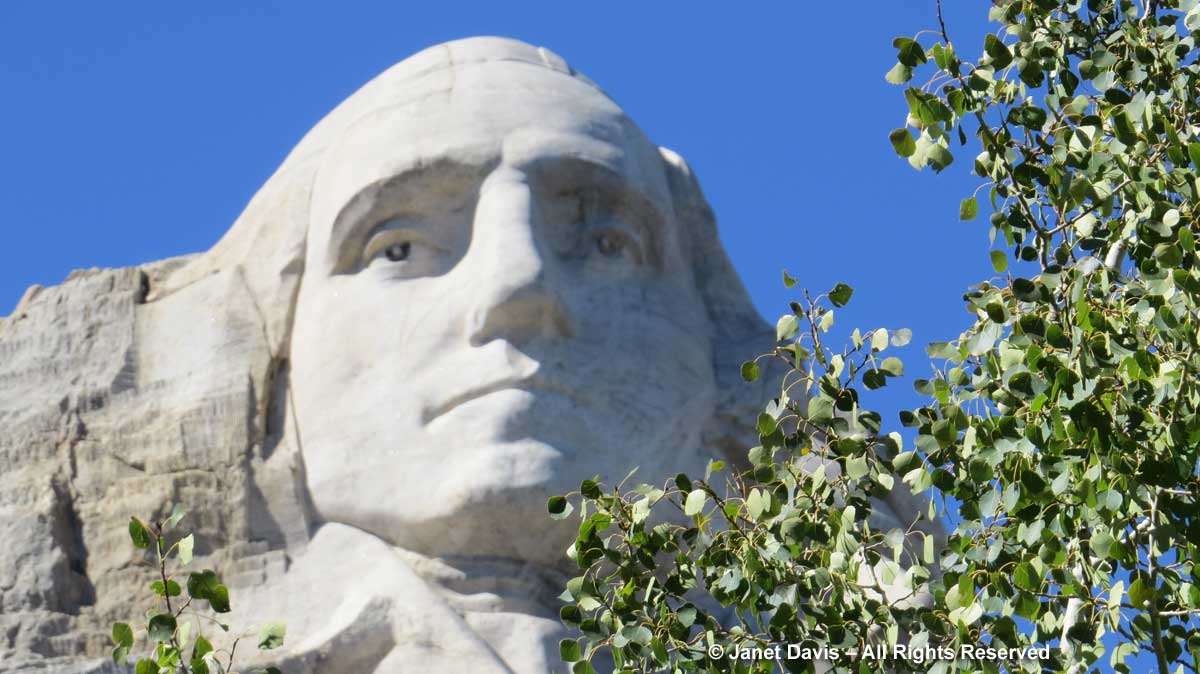
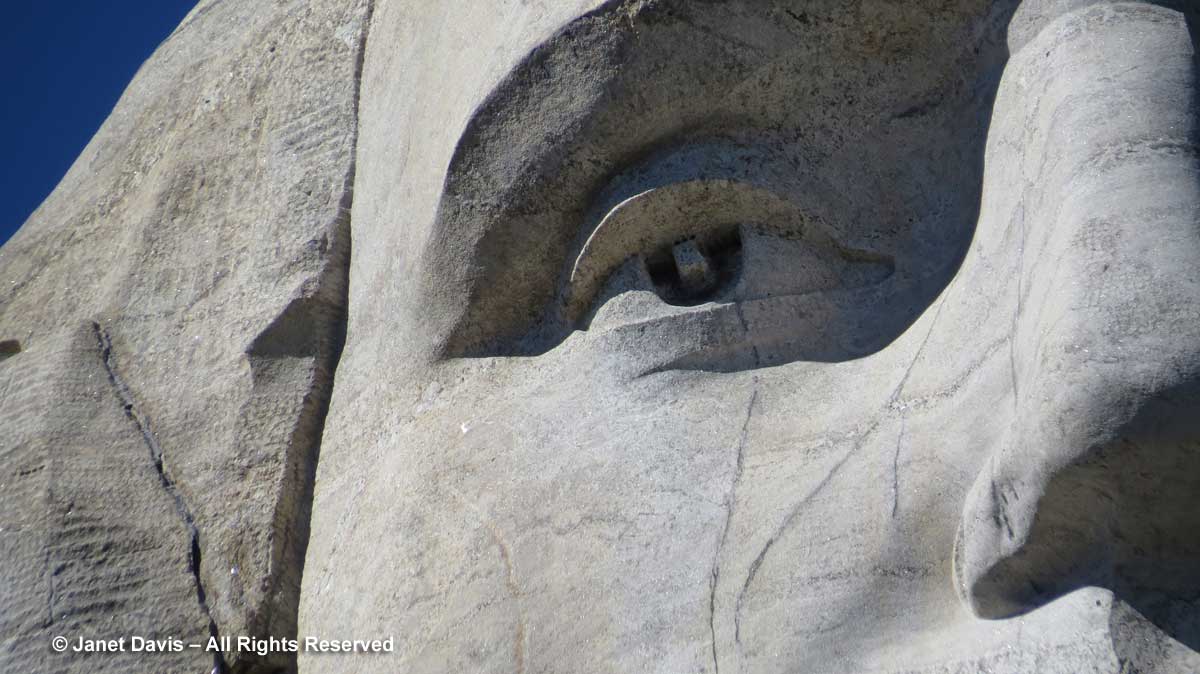
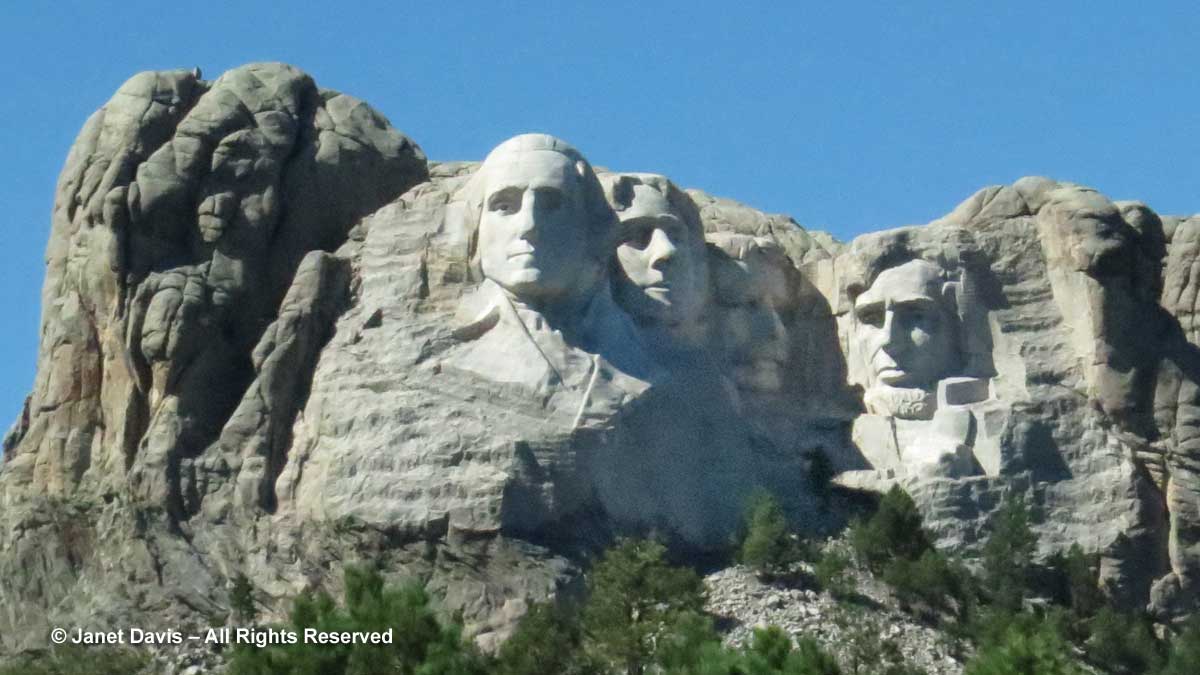
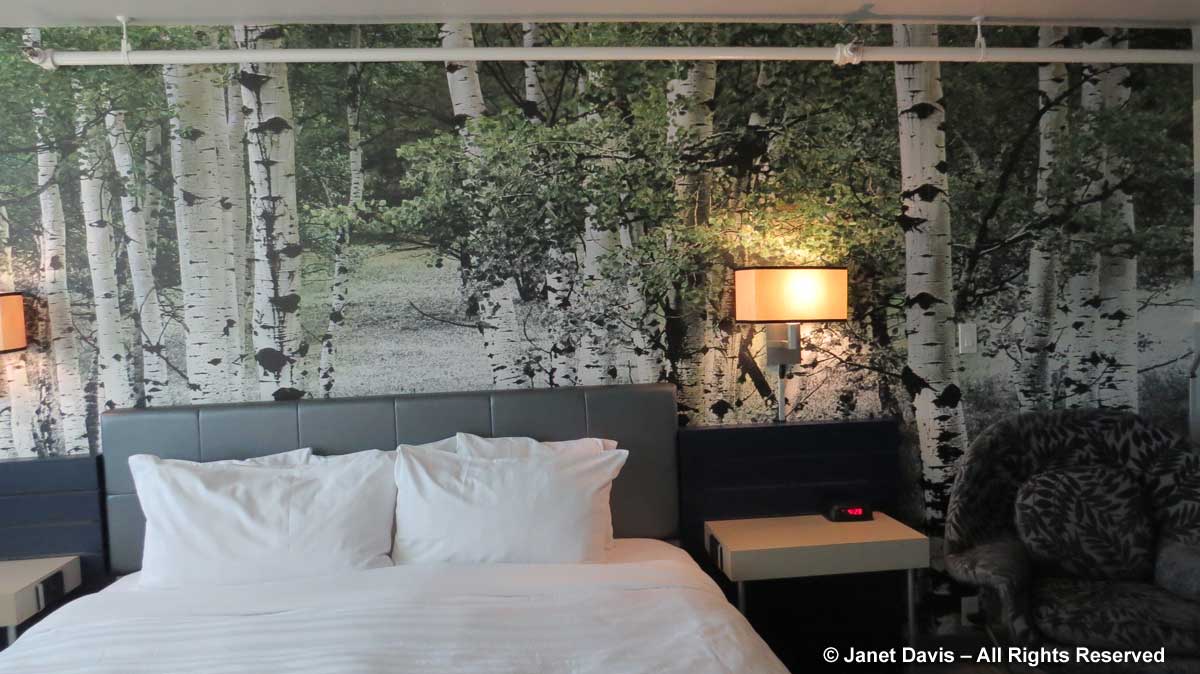
Thank you, beautiful places & memories.

Hopefully our paths will cross again someday.
Thanks, Laurie! It was a pleasure to meet you and Leonard.
Blog is just awesome. Bob & I relived the whole trip again. Thank you so much for sharing. We are going to southern Italy in September. Hope you are on the trip!!!! Haha. B.J & BOB Lewis
Thanks, Bettejane! Italia sounds lovely….. But I think our next journey will be ‘down under’. Cheers to you and Bob.
My wife and I vacation regularly in north and central WYO – and this blog is simply superior as it reminds me of our travels. Thanks so much for sending me the link. I enjoy your photography AND commentary!
I haven’t blogged in several years, yet I left my link below…
Thanks for the kind words, Mike. You are so lucky to have this spot as a travel destination. I loved this part of the American West – and was so delighted to get to the Tetons and Yellowstone (my blogs… er, books… on those were linked from this one.)